Final Fantasy XVI: The one that can say “fuck”
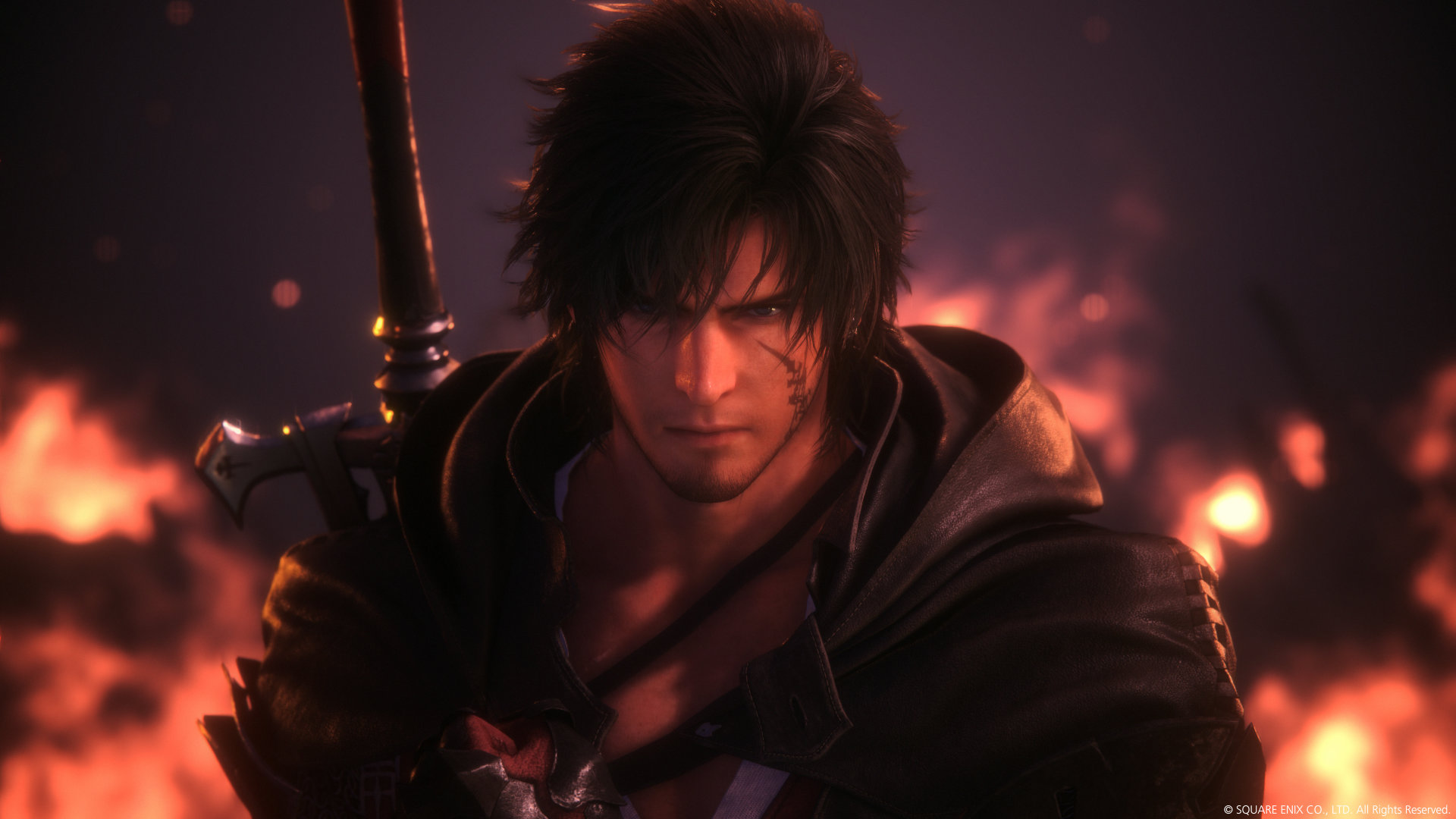
Final Fantasy XVI is an easy game to make assumptions about. From the moment it was unveiled, many worried that it would be overly bleak and nihilistic in a series that’s usually anything but. That it would use its newfound ability to more directly depict sex, violence, and sexual violence primarily as a cheap means of shocking the audience and generating buzz, taking the worst possible lessons from one of its primary inspirations, Game of Thrones. Between its shifts in aesthetic, tone, and gameplay, it seemed a little too eager to prove that it wasn’t your dad’s Final Fantasy. All the trailers about the grim protagonist making angry chin down, eyes up faces and thinking about revenge certainly don’t help. They wanted you to think that was the whole game!
Anyway, it turns out that, in the sequences that really matter, Final Fantasy XVI wants to be a shounen battle anime.
This is theoretically great news for me, someone who loves a good shounen battle anime and finds much of Game of Thrones unwatchable. FF16 does, in fact, have many completely bonkers multi-phase boss fights where two overwhelmingly powerful characters trade blows, transform into more powerful forms, and loudly state their ideals. This is a game where people scream while boosting their energy exactly like Dragon Ball characters. This is a game with beam struggles. This is a game where your dog can do a Sonic homing attack. I can’t help but like those parts.
It’s less good news for anyone who was earnestly interested in this being “the mature Final Fantasy for adults.” Its shallow, cliché writing and underdeveloped characters are almost completely unable to cash that check. At times, I wondered why they even went for an M rating in the first place, if this was the story they wanted to tell.
Part of me was relieved, knowing how poor of a track record mass market AAA action games have with “difficult subjects” — and also knowing how inconsistent the narrative arcs have been throughout Final Fantasy XIV’s expansions, which many of FF16's core creatives previously oversaw. But part of me was also open to the thought of FF telling a story in the vein of something like Berserk or Chainsaw Man, two stories I deeply love. Stories that balance awe-inspiring spectacle, violent action, and horrific trauma with moments of genuine peace and reflection and intimacy. Compassionate stories about broken, fucked up people trying to make it in a complicated world that feels like it’s out to hurt them. Stories that wouldn’t resonate the same way if all the graphic violence and sex were scrubbed out. And FF16 just doesn’t hit like that. But when you announce to the world that you’re exploring more dark, adult, messy, nuanced subject matter, only to completely hedge your bets on it? It just makes me judge the entire game under a different lens, one that the writing doesn’t benefit from in the slightest.
My opinions on Final Fantasy XVI constantly flip-flopped based on what was currently happening on the screen. It’s a game of extreme highs and lows. But without a doubt… it’s very Final Fantasy.
CONTENT WARNING: This article will mention misogynist violence, sexual assault, and incest. These aren’t a huge part of the game, but they come up. Oh, and, you know, I’m going to spoil the entire game.
DISCLAIMER: Rather than playing through FF16 myself, I watched my boyfriend play through the entire game while discussing it with him thoroughly, then dabbled with the combat a little on my own. He also proofread this piece. Feel free to take my thoughts with a grain of salt, since I know the fun of the combat carries the game for a lot of people. But I’ll mostly be focusing on the story, and I doubt my opinions on it would’ve changed much if Anthony had handed me the controller.
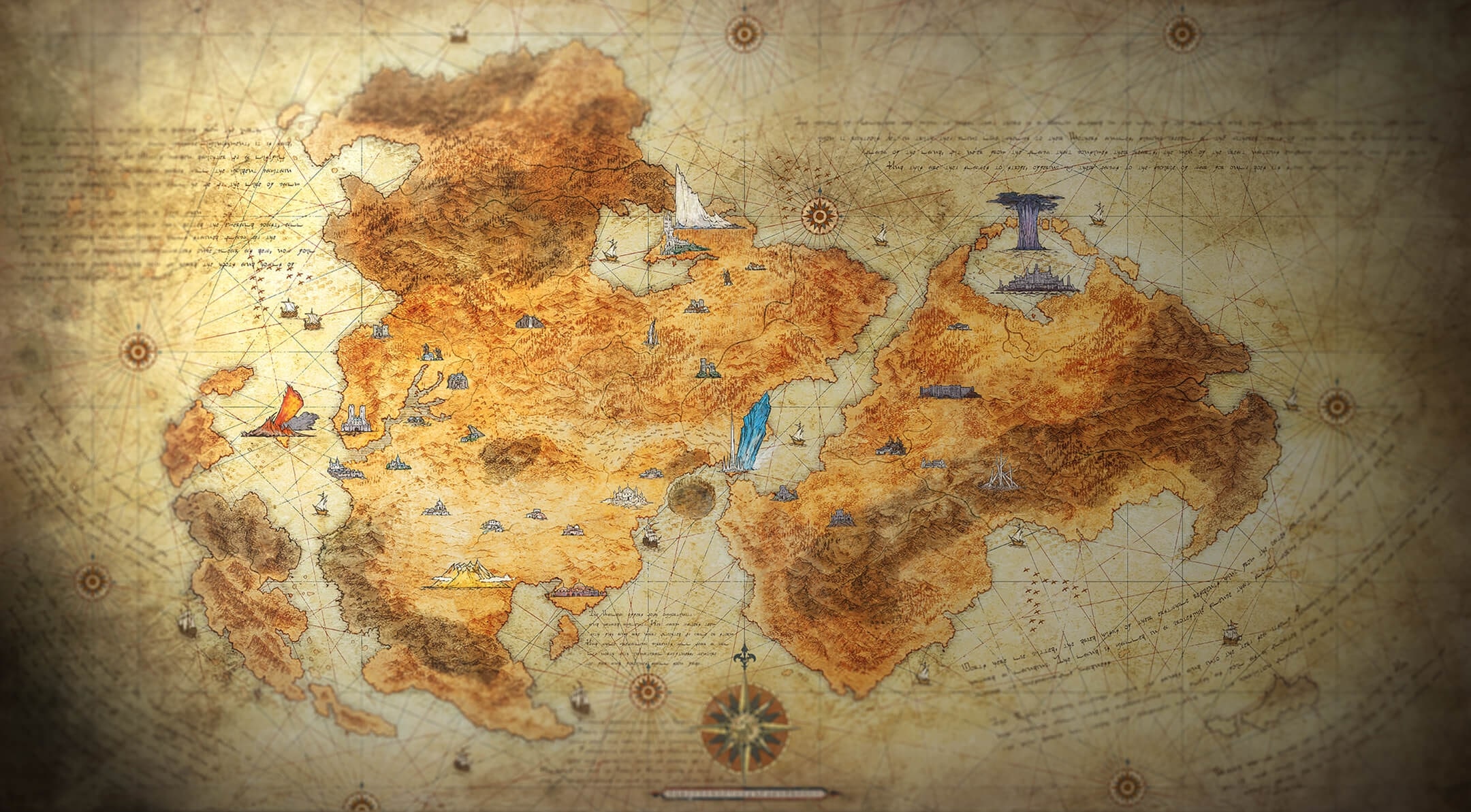
The world
Final Fantasy XVI is set in the land of Valisthea. I knew from the start that enjoying this world would be an uphill battle for me. It isn’t going for D&D-style medieval fantasy, like the first five games would more or less do (before introducing some sort of ancient sci-fi technology later in each game, at least), but rather trying harder than ever to just depict a fictionalized version of the real medieval world— or at least, modern pop culture’s image of it. And boy is that not what I want out of this series.
Gone is most of the whimsy. You’ll never fly an airship. You won’t encounter any funny little guys like Vivi or Red XIII or Papalymo. You won’t find a town full of wizards, or dwarves who say “Lali-ho!”, or anything of the sort. There’s one single Moogle, who exists only to manage the Hunt Board in your base. Every other character you’ll speak to is a human. There is a dog. The dog cannot talk. There are Chocobos, but no Chocobo Theme. While the game’s next gen graphics are certainly extremely pretty, you’ll rarely encounter any scenery as imaginative as FF9’s Iifa Tree, the interiors of FF13’s Cocoon, or FF10’s aquatic Blitzball arenas, nor does it even have the fun juxtaposition of seeing a bunch of FF characters walk into a regular-ass gas station like in FF15.
It’s mostly just dingy old medieval Europe, populated by all the tired innkeepers, blacksmiths, town guards, and prostitutes you would expect, just with a higher rate of feathered bangs per square mile. And it doesn’t help that most areas have such dull, washed out color palettes that I had to check and see if our TV had its HDR settings configured wrong. There will thankfully be exceptions, but this is the image of the world presented up front.
Valisthea is threatened by the encroaching “Blight,” which turns the land lifeless and grey. More and more of the realm’s outskirts are dying, pushing the nations to feud over the remaining green pastures. Intriguingly, modern Valisthea is so cut off from the rest of the world that it’s implied it may just be the last small landmass on a planet otherwise consumed by the Blight, although this is never confirmed or denied. The game will suddenly decide that the Blight is important later, but for the early hours it’ll be commented on surprisingly little.
What’s really important to know up front is that there are three different, seemingly unrelated sources of magic that vie for the story’s attention.
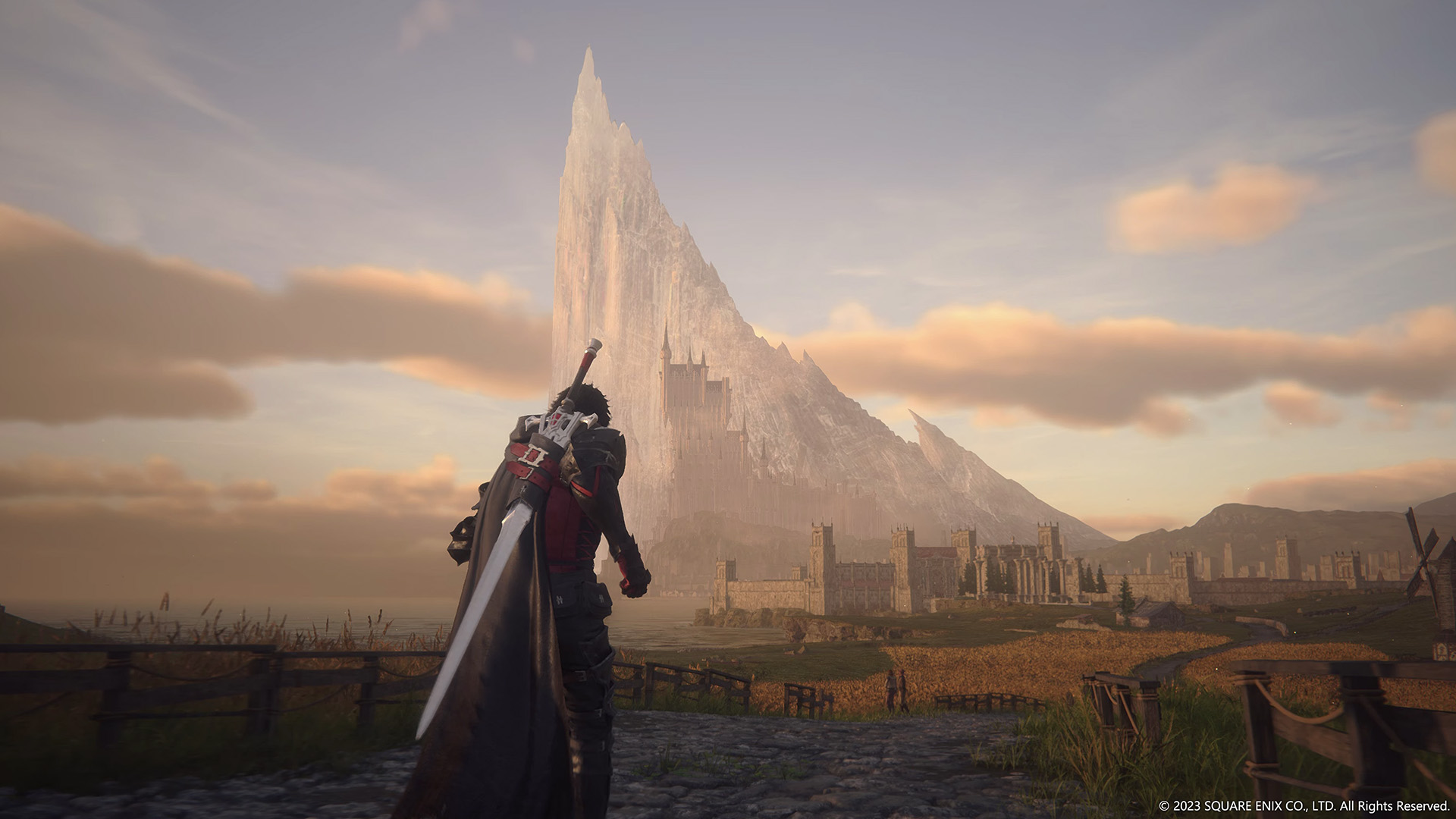
ONE: Scattered across Valisthea are five mountain-sized Mothercrystals, the exteriors and interiors of which generally deliver the most striking and fantastical sights in the game. Most of the major powers of the world have built their capital cities next to them for the sake of mining them, as crystals are the most accessible form of magic and this is a society wholly reliant on magic for day-to-day life. At least, they tell you it is. A few times you’ll see characters use small fire crystals to light pipes or boil water. Things like that. It can be hard to remember how magic-reliant this world apparently is when everything mostly just looks like medieval Europe, a world that did not need magic to exist. Either way, we’ll have more to say about crystals later.
TWO: Unrelated to the Mothercrystals (I think?), some people are randomly born with the ability to do magic — although if they do TOO MUCH magic their bodies begin to petrify, and they eventually die. Which is probably why you never see them do magic, despite that being their defining thing. These people are known as “Bearers” and are almost universally enslaved their whole lives, typically marked with a cursed face tattoo that earns them the label “Branded.” I don’t know whether or not this is supposed to be a slur, but non-Bearer NPCs sure say it like it is.
Yes, this game is, in fact, doing a big story about slavery in a world consisting almost entirely of white British people — for “historical accuracy,” of course, because the average AAA game producer continues to believe that everyone in medieval Europe was white. Even the blatantly Middle East/North Africa-inspired desert nation of Dhalmekia on the southern side of the map seems to mostly be inhabited by British people with tans, Lawrence of Arabia style. At best, maybe two noteworthy characters are “racially ambiguous.” For that matter, it’s also doing yet another oppression allegory where the oppressors are given a legitimate reason to fear the minority — they can literally kill you with fucking magic.
This is as bad as it sounds. Or at least, it is until the game decides to stop caring about slavery as a major driving force in the plot. We’ll get to this.
THREE: Last but certainly not least, the Dominants, people who can channel the powers of godlike entities known as “Eikons” and even fully transform into them. (Think the jinchūriki from Naruto, sort of.) Like Bearers, Dominants can only use their magic so much before it exacts a fatal toll on their bodies, but the limits seem to be whatever the story needs on a case by case basis. Dominants can also grant other people the ability to use some of their elemental magic, but this rarely comes up. Those granted magic in this manner are generally not treated like Bearers, except for when they are.
Supposedly, the different cultures of Valisthea all treat their Dominants differently, but only the weirdo religious extremists in the small Iron Kingdom off the west coast really seem to subjugate their Dominants. The rest of the major kingdoms put them in some sort of position of power, or even base their royal families around Dominant bloodlines. Despite this, the game will still feel the need to give its protagonist a line where he points out the irony of the term “Dominants” out loud.
The Eikons are, of course, based on classic Final Fantasy summons, because the creatives behind FF14: A Realm Reborn seem to have a particular fixation on the classic summons. There are eight Dominants for eight elements: Phoenix (fire bird), Shiva (ice lady), Ramuh (electricity wizard), Titan (earth giant), Garuda (wind harpy), Bahamut (light dragon), and Odin (dark knight guy on horse), plus the long-lost Leviathan (water serpent), who’s mentioned in passing but otherwise absent for reasons the game doesn’t explain. Most fans seem to assume it’ll be DLC.
Naturally, the Dominants comprise most of the game’s main cast.

“Yeah, that’s me. My name’s Clive. I’m just your average kid!”
The star of the show is Clive Rosfield. We briefly meet him as an adult in an opening action sequence that’s really just a movement tutorial, then flash back to his youth for a couple slow, cutscene-heavy hours.
Clive is the eldest son of the Archduke of the humble Rosaria. In theory, Clive should have been the Phoenix Dominant, and therefore his father’s heir, but instead it skipped him and went to his younger brother Joshua. In the prologue, the meek Joshua (10) is being prepared for his future on the throne, while Clive (15) trains as Joshua’s primary bodyguard using some fire magic granted by the Phoenix. Their brotherly bond is sweet. Also, their friend Jill is there, and she is a girl.
It’s here that we finally get our first taste of combat. Yes, Final Fantasy XVI has, in fact, fully embraced real time action. It’s fast and responsive with the expected mix of sword slashes, ranged magic, dodges, a gap closing move, and flashy special attacks that are on cooldowns, with no use of menus whatsoever. Enemies have stagger meters a la FF13 and FF7 Remake, which deplete as you do damage and leave them vulnerable for a short period when empty. This leads to a rhythm where you slowly chip away at an enemy until they’re staggered, at which point you go all out with your strongest moves and try to do as much damage as you can. You can also map items such as potions to the D-pad and use them mid-combat, sort of like Estus Flasks. The early game keeps things simple, but I’ll have much more to say about the gameplay later.
By the end of this prologue, Clive’s life goes to hell. His mother, Annabella, is a selfish bloodline purist who’s always viewed him as a failure for not being born the Phoenix. Hoping to take her precious Dominant baby Joshua with her and fuck off to greener pastures, she stages a violent coup against the Archduke so that she can run off with the Emperor of the vaguely French-flavored Holy Empire of Sanbreque. However, this plan backfires. In the ensuing massacre, an unheard of second Eikon of Fire — the demonic Ifrit — appears, goes on a rampage, and kills Joshua. (After a lengthy Panzer Dragoon-esque rail shooter boss fight where you control Joshua as the Phoenix, that is.) A distraught Clive is one of the few who survive the night, but Annabella gives him to the Empire as a slave before having her onlooking handmaidens executed, because she has no character traits beyond “evil bitch.”
Spoiler: it’s immediately obvious that Ifrit here is actually Clive, having awoken unknown Dominant powers and gone out of control, but the game’s going to spend a good few hours pretending you didn’t figure this out watching the trailers. The game will spend even longer pretending you don’t know what phoenixes are famous for doing. I’ll be generous and call this “dramatic irony.”
Back in the present day, Clive is now 28, having spent the last 13 years as a Branded slave in the Sanbreque army. We rejoin him behind enemy lines during a clash between Titan, serving the vaguely Arabian Dhalmekian Republic, and Shiva, serving the aforementioned religious extremists in the small Iron Kingdom, with his squad intending to kill Shiva. Clive realizes that Shiva is really none other than his childhood friend Jill, having apparently awoken Dominant powers since they last saw each other, and he betrays his commanding officer to save her. Conveniently, the two newfound fugitives are immediately taken to safety by this game’s Cid, who coincidentally happens to be there at the time. Even more coincidentally, Cid is even accompanied by Clive and Jill’s old puppy, Torgal, who is now a full grown wolf. His name is fun to say. Torgal. Torgal.
And so the game can finally properly get going.
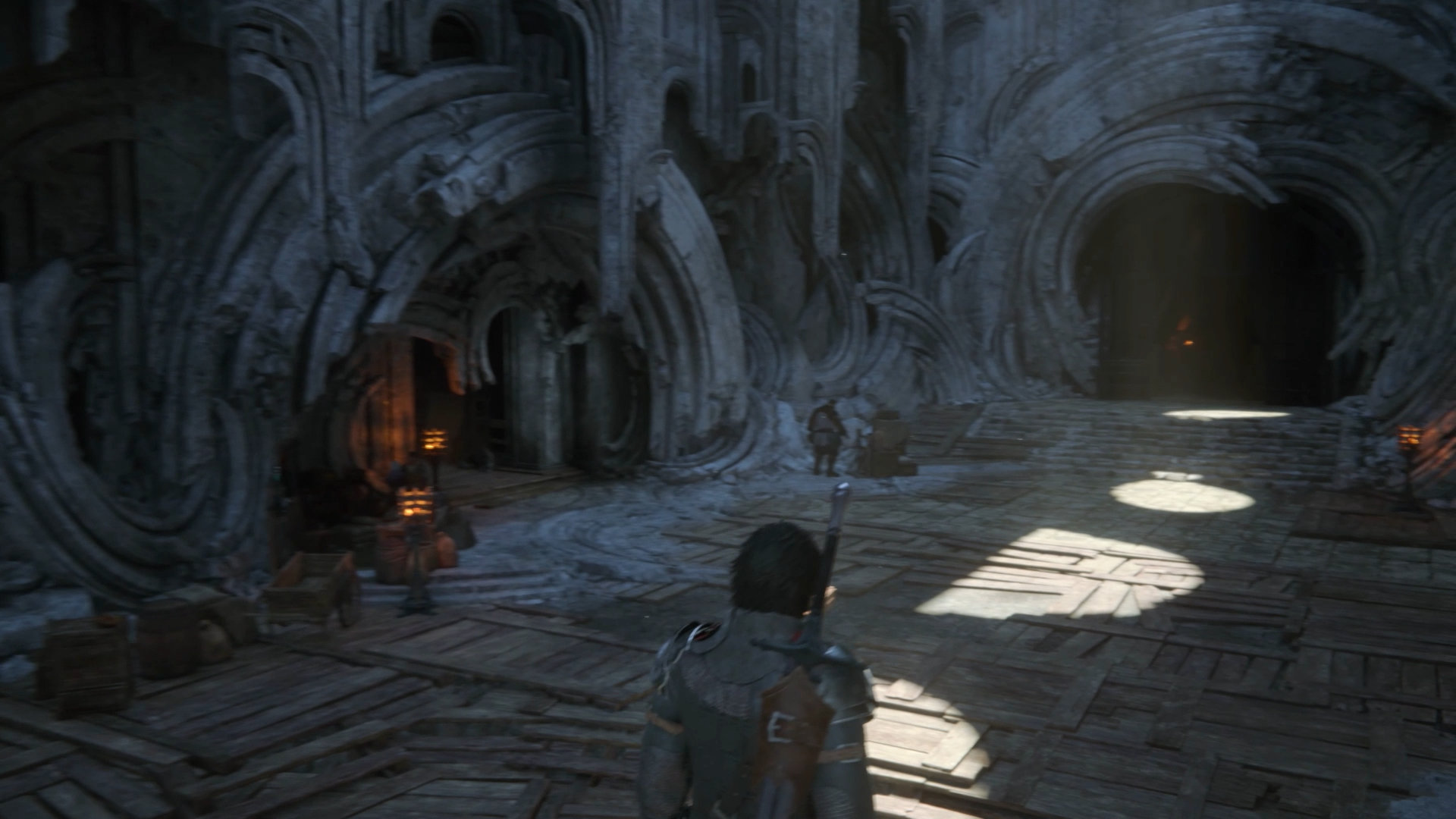
Hide away, folk family, or else someone’s gonna get ya…
Cid, as it turns out, basically runs the underground railroad for Bearers, based out of a hideaway called… well, The Hideaway. (He’s also soon revealed to be Ramuh’s Dominant.) The Hideaway serves as your main “town,” being the place you’ll return to between most story missions.
I had mixed feelings about Cid and the Hideaway, mostly because they didn’t jive with the type of Dark Fantasy story I thought I was getting into. The Hideaway offers a reprieve from the horrors of the rest of the world basically as soon as you exit the prologue. There’s no real time spent exploring Clive’s time as a slave, or even as a runaway, before reaching the one place on the planet where everyone is nice and has all the answers. There’s no time to sit with that discomfort. To go back to the Berserk comparison, it’d be like if Guts reached the safe haven of Elfhelm the very next chapter after the idea was suggested.
The Hideaway always has food and a warm bed available for whoever needs it. Hours before the Blight becomes relevant in the story, we have a gardener at the Hideaway excited to reassure us that Blighted land can still be made to grow plants again. Within minutes of learning that Clive has become Branded, we’re introduced to the one person in the world capable of removing the Brand. (Frustratingly, though, Clive won’t actually take up this offer to get the cursed face tattoo marking him as a slave removed for another ten hours. That chunk of the game has to largely revolve around teaching you and Clive just how bad the slavery situation is to get him to care about Cid’s cause. You know, as if Clive didn’t just spend 13 entire years of his life enslaved to the Empire.)
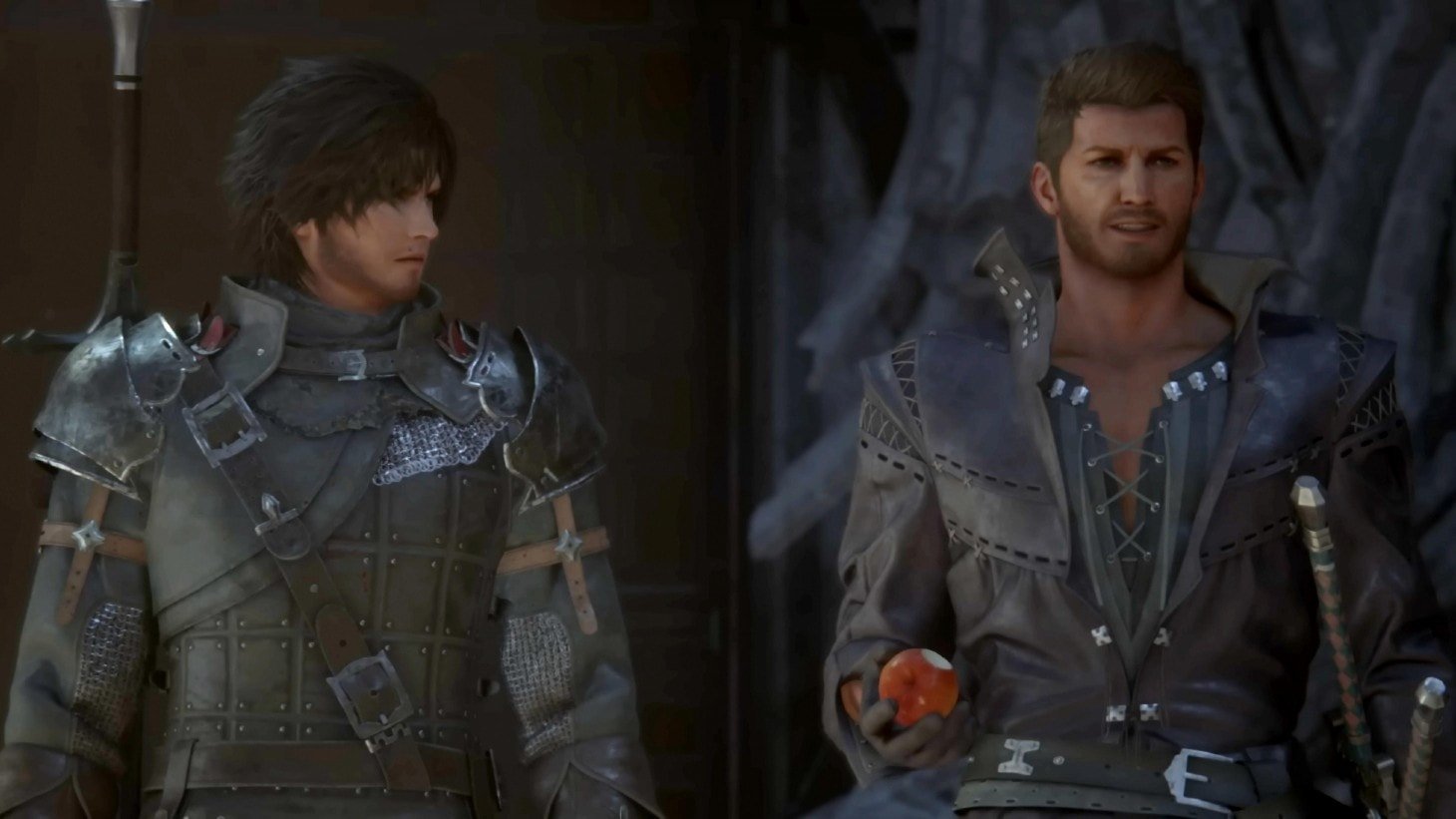
Similarly, upon his introduction Cid felt like way too clear-cut of a hero for the type of story I thought I was getting into. He’s just purely, unambiguously good, and he has all the answers. He’s an archetype played straight. It feels too easy for this type of story. Not just because Cid’s a good guy, but because he doesn’t have to do any work to get to that goodness, nor is he ever really faced with anything that challenges it. He’s got everything figured out and knows exactly what to do. He never has to discuss politics or strategy with other people at the Hideaway, nor does he seem to be building off of the work and ideas of previous revolutionaries. He doesn’t even ever sit down and talk with Bearers to figure out their needs and how he can help them. Everyone is just following “Cid’s dream,” as they call it, which I guess came to him fully-formed one day. He’s a downright messianic figure. I’d call him a white savior, but, again, they made a game about slavery where everyone is white.
(Specifically, Cid’s dream is stated to be to create “a place where people can die on their own terms.” A few hours later Clive will go “but what about a place where people can LIVE on their own terms?” as if this doesn’t basically mean the same thing, and the game will treat this like the most profound line ever written. These are thereafter combined into “creating a world where people can live AND die on their own terms.” That’s dialectics, I guess? Thesis, antithesis, synthesis. Hegel would be so proud.)
Now, I love plenty of mass market pop culture about heroic rebels fighting the big evil empire, including several previous Final Fantasies. But when you’re repeatedly citing George R.R. Martin as an inspiration, and giving me a world with politics so complex that you need to create an entire NPC who exists just to keep me updated on the movements of the various factions? My expectations are different than when I’m watching Star Wars. Actually, in the early hours, I was constantly thinking back to how much more nuanced and fascinating Andor’s takes on the Rebels, the Empire, and the systems surrounding them were compared to what’s being done here. If only Cid had an ounce of Luthen’s complexity...
That being said, knowing the much more shounen action direction the story would actually go in, I’m willing to look back on Cid and his Hideaway more fondly. While he felt like a square peg in a round hole to me at first based on how the game was pitched, he fits better in the lighter, more morally straightforward story we actually got by the end. He’s a likeable character, particularly thanks to the memorable performance by the gravelly-voiced Ralph Ineson. He’s charismatic and witty. He’s world-weary and feeling his age, but he still just wants to do good in spite of that. I get why he’s proving to be the breakout star of the game, aside from Clive himself.
I will also admit that not “both sides”-ing a fight to end slavery puts the writing in this game above a good number of beloved western RPGs. But a lot of western RPGs are just written by libertarians, so that’s not exactly a high bar to clear.
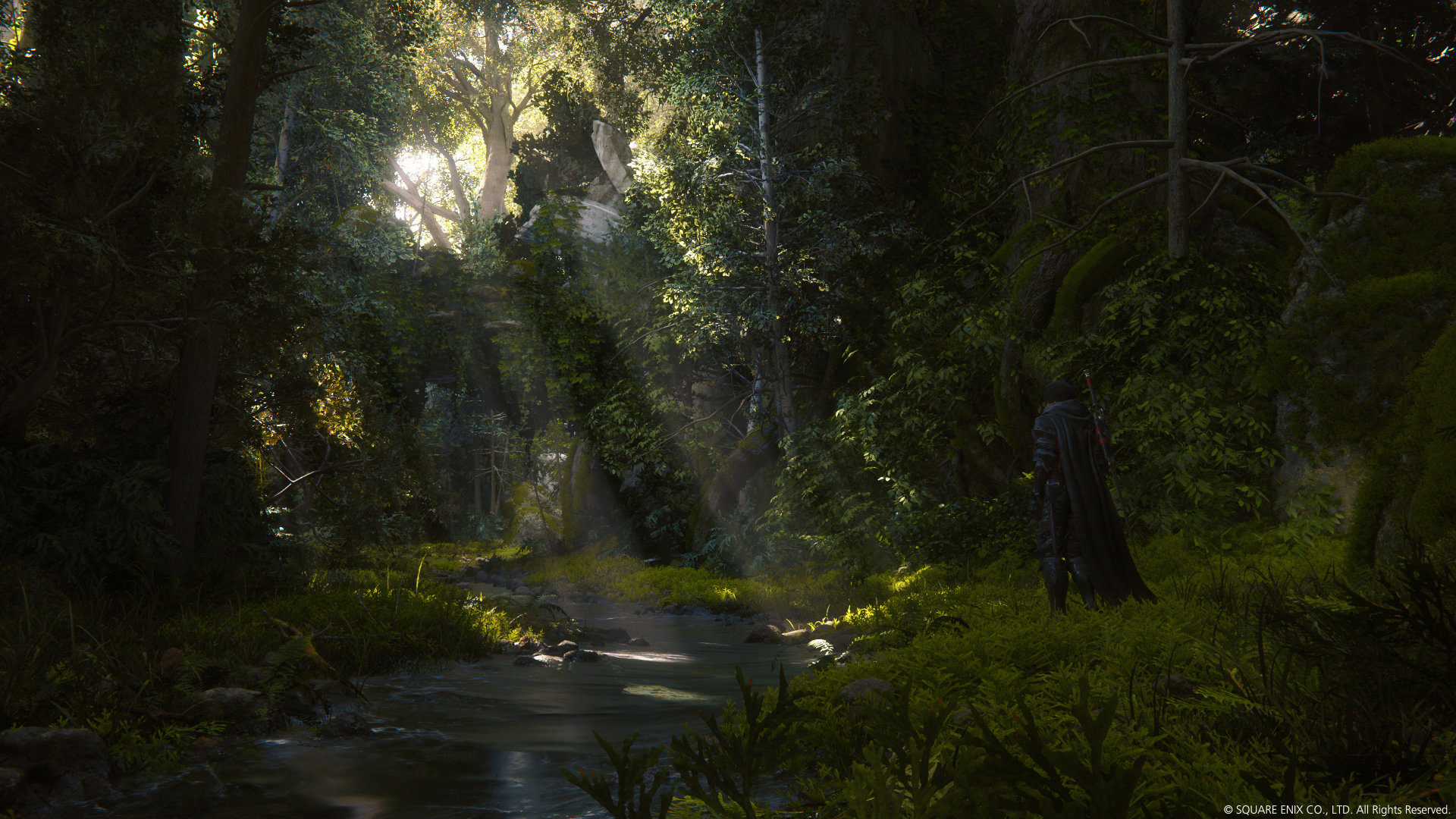
Clive and Cid’s Big Adventure
Anyway! While Cid presumably has more important things to be doing as the head of The Underground Railroad For Wizards, he decides to help Clive follow a lead on an alleged second Dominant of Fire, as the only thing Clive wants in life right now is to avenge Joshua. Said Dominant is apparently already being scouted out by Benedikta, the Dominant of Garuda, who works for the evil Kingdom of Waloed (pronounced wuh-LOOD). This will position her as the villain of the game’s first proper story arc.
Again, it was safe to assume from the start that Clive is Ifrit, which in turn narrows down who this other Dominant of Fire Clive’s tracking down actually is. It drove me insane that no one ever goes “Hey wait, aren’t phoenixes immortal?” We can’t hint that Joshua is alive, though, because he’s got to spend this part of the game running around in an ominous hooded robe exactly like the main antagonist’s as a red herring.
Clive and Cid’s journey will take you through a string of linear stages designed to always funnel you towards the next boss or story scene, with only a few glowing blue item pickups off to the side as distractions. The first six or so hours of the game are very linear like this, which led me to make a few posts early on saying that the game was only interested in being a character action game a la Devil May Cry, with minimal “RPG elements.” This disappointed me at first, but the extreme padding in the back half of the game would make me come to truly miss these few briskly paced, action-packed hours. I can’t believe I came away wishing a Final Fantasy game was less of an RPG, but here we are.
While I feel the pre-release hot takes about how “the story is so convoluted that even the devs couldn’t figure it out!” were overblown — at its heart this is the most straighforward FF story in decades — this was the point in the story where Anthony and I felt the need to consult the lore entries. Mainly, the game kept using the term “Royalists” to describe an enemy faction, and we had no clue who this was referring to. It turns out it was the guys from Waloed, while we thought it was Sanbreque. While I initially liked that the game had jumped right into some action, comparing it favorably against the slow walls of text about the warring nations of Ivalice that Final Fantasy XII is front-loaded with, by this point I kind of wished we’d gotten a straightforward rundown of who’s fighting who early on. You don’t actually get this until like a dozen hours in, when the war map and relationship chart unlock. And while the “Active Time Lore” system is nice, we never wanted to pause a cutscene to check the in-game wiki.
Eventually, after fighting a whole lot of her dudes, we catch up with Benedikta for the first true major boss battle of the game.
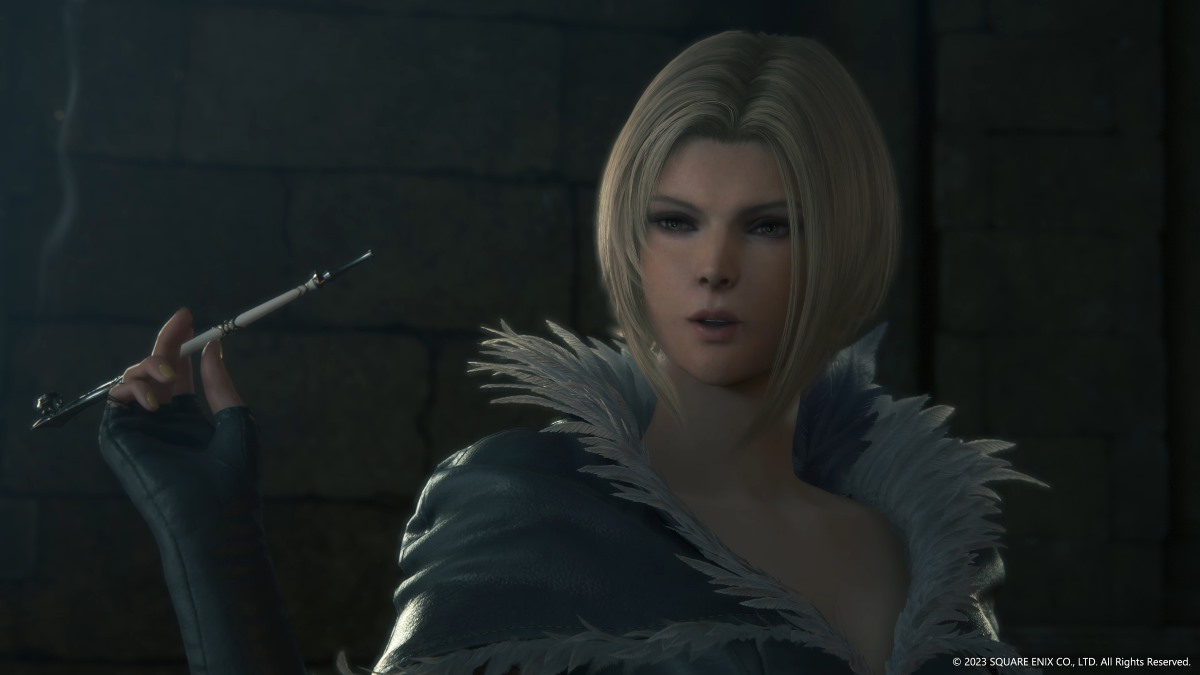
Evil harpy woman
I feel like there are two alternate versions of Benedikta who would have worked better. Option one: the version whose inner life and complexities the story is more interested in, which we might have gotten if the game had learned more valuable lessons from George R.R. Martin. Option two: the version who isn’t trying to be particularly deep and instead is just a cool sexy evil witch lady who serves as a fun villain for a while, which we might have gotten if the game just embraced being a shounen action romp. Unfortunately, writer Kazutoyo Maehiro is too bad at writing women for us to get the former, and the game tries too hard to be taken seriously to get the latter. So we get an uncomfortable middle ground.
Benedikta is very overtly sexual as a character. Even beyond her low-cut top, sultry voice, and the exaggerated way she sways her hips any time she walks, she’s by far the most sexually active character of any relevance. Shortly after we meet her in the game’s opening, Benedikta will pounce on Hugo Kupka, Titan’s Dominant, and practically start dry humping him in a hallway. Later, she’s also shown to be sleeping with her boss, King Barnabas — Odin’s Dominant — via a scene where they’re both in the nude but the camera keeps doing cinematography gymnastics to avoid ever showing her nipples. (This is very funny to me.) And, of course, she’s also Cid’s toxic ex.
I don’t have a problem when Benedikta being a sultry femme fatale type. I am a known stan of Rouge the Bat, and I have the Bayonetta OST in my iTunes library. And I think Benedikta has a cool design! I also don’t have a problem with her sleeping around. But it feels very telling that the most sexually active character in the game is a female villain who’s using her promiscuity to get ahead in the world — as if she wasn’t already born one of the most magically powerful beings in existence. Compare this to the extremely chaste romance between Clive and Jill. When put next to Clive’s evil mother Annabella, there’s a recurring theme here of evil blonde women who just want to fuck the men in power to further their personal agendas.
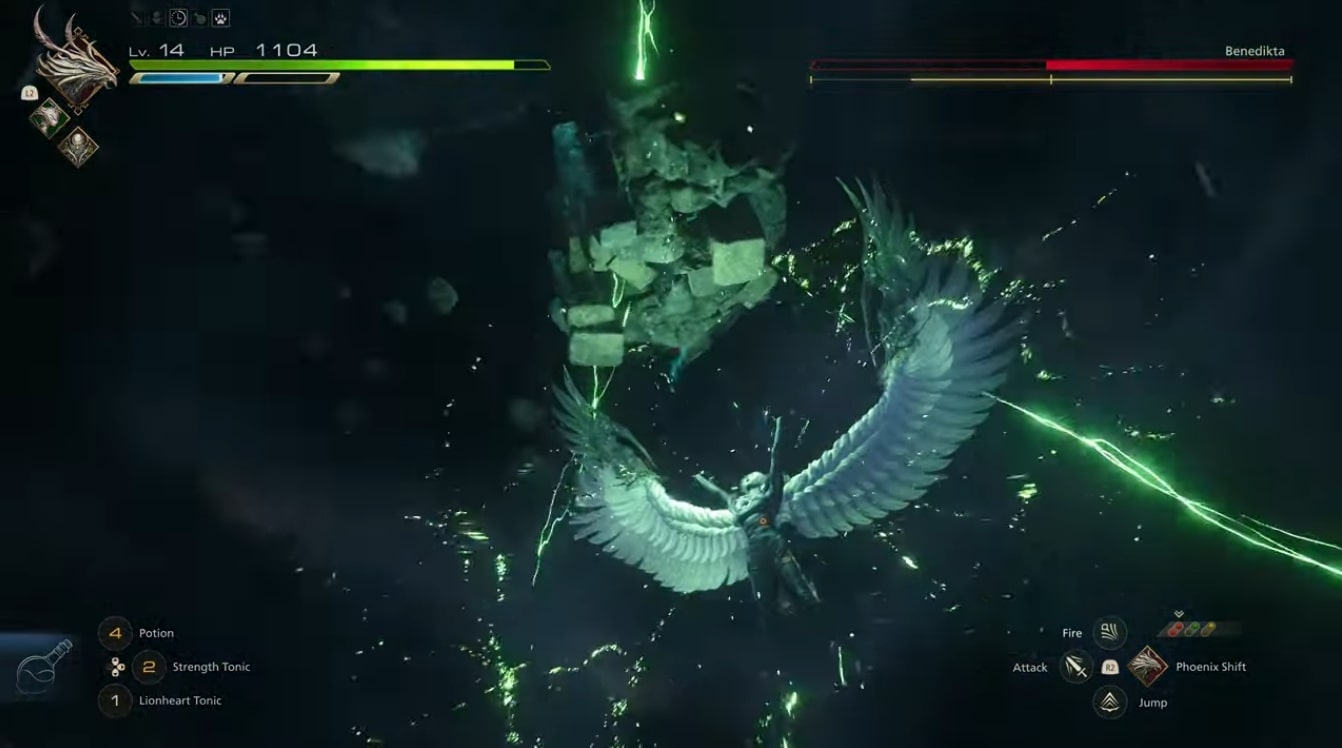
Anyway, because she has the “second” Dominant of Fire that Clive’s looking for captive, you fight her. It’s a multi-phase fight where she uses more and more Garuda powers. Eventually she’ll start grabbing and throwing entire castle towers at Clive. It’s cool. The boss fights in this game are cool. These are the parts that I like. And then afterwards Clive steals her Garuda powers — a thing he’s only just now realizing he can do — to unlock the next branch on his skill tree.
After her lifelong connection to Garuda is severed, Benedikta starts having a mental breakdown, and some of her grunts pull her away as the off-screen Dominant of Fire starts to destroy her fortress. They drag her off into the nearby woods where her grunts are murdered by three random bandits, who I guess just spawn out of thin air in this kind of story. No prize for guessing what a gang of random, nameless bandits in a medieval fantasy story written by hacks want to do to a defenseless woman in the middle of nowhere after walking up to her and saying “What do we ‘ave ‘ere?” Yes, the fact that this happens the second Benedikta loses her Garuda powers fucking sucks. Before they can really do anything to her, Benedikta spirals even further into despair, wonders if this is her karmic punishment for not siding with Cid, and decides the whole world deserves to be destroyed, causing the last remnants of her connection to Garuda to take over. She now takes on her full Garuda form, but she’s no longer in control of her own actions.
In other words, Benedikta randomly almost gets raped and turned into a sex slave and it makes her go crazy and turn into a big monster that you have to put down.
Yeah, it’s, uh. Not great!
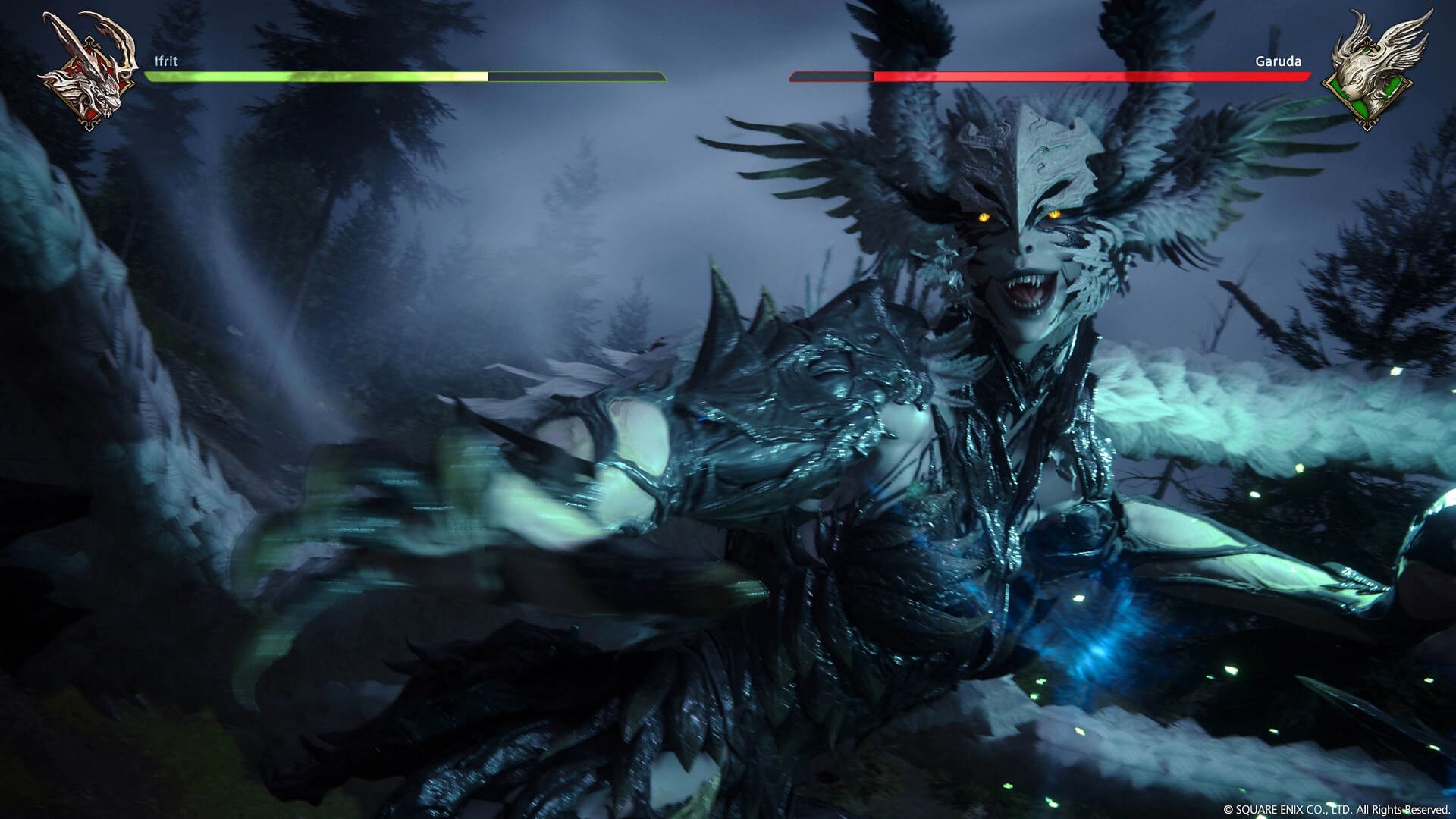
The fight against the gigantic Garuda is certainly fun, and she’s got a cool design. The second phase will drive Clive to finally transform into Ifrit, confirming what we all knew and giving us our first proper Eikon vs. Eikon fight. These bombastic kaiju battles will generally be my highlights of the entire game, but it was impossible for me to really get into this first one because of the overwhelmingly nasty taste Benedikta’s storyline was leaving in my mouth. Again, it just feels like lashing out over her trauma turned her into a monster and now you have to put her down.
And so Benedikta dies, with Cid mourning her after the battle. The two have a history together, and Benedikta is vaguely shown to have been saved from an impoverished background by Cid as an attempt to give her some depth beyond Sexy Evil Woman, but we never get the full details. Other villains will later call her a whore, but it’s hard to tell if they’re talking about her past or just being misogynists.
It can still get worse, though!
Later, Benedikta’s severed head is sent to Hugo Kupka in a box.
We never actually see inside the box, and it takes hours for anyone to actually say that’s what it is, but yep. That’s what it is. Either Barnabas or one of his minions must have found Benedikta’s corpse sometime after her and Clive’s battle, cut off her head, and sent it to Kupka, blaming Cid for the deed so that Kupka will start attacking Cid’s rebels.
Yes, the ultimate fate of this vaguely sexually traumatized seductress is for her decapitated head to be used as a chess piece in a feud between three of her former lovers. We never learn more about her as a character. Her death is merely fuel for Kupka’s rage so that he can be the next Dominant you have to fight.
Yeah, I, uh. I hate this. That sure is the Game of Thrones influence coming through in the worst possible way. None of Martin’s knack for political intrigue or nuanced characters, just the gratuitous violence against women. This is exactly what I was worried the game would be full of. To its credit, this is the most egregious instance in FF16, and nothing this nasty will happen again. It could’ve been much worse. But it also could’ve done anything other than this.
We’re never truly invited to see Benedikta’s perspective. We get so little of her inner life. We get hints, but she mainly exists in relation to the men she slept with. We see her through their eyes, not hers. She exists to further their stories, not her own. By the time we finally start to deal directly with Barnabas and reach Waloed, she may as well have never existed at all with how little lasting impact she has. And this will become a recurring problem with the game’s handling of its female cast — and, hell, the male villains don’t fare much better, either, when it comes to having any real depth.
…But, uh… at least the combat’s fun, right?
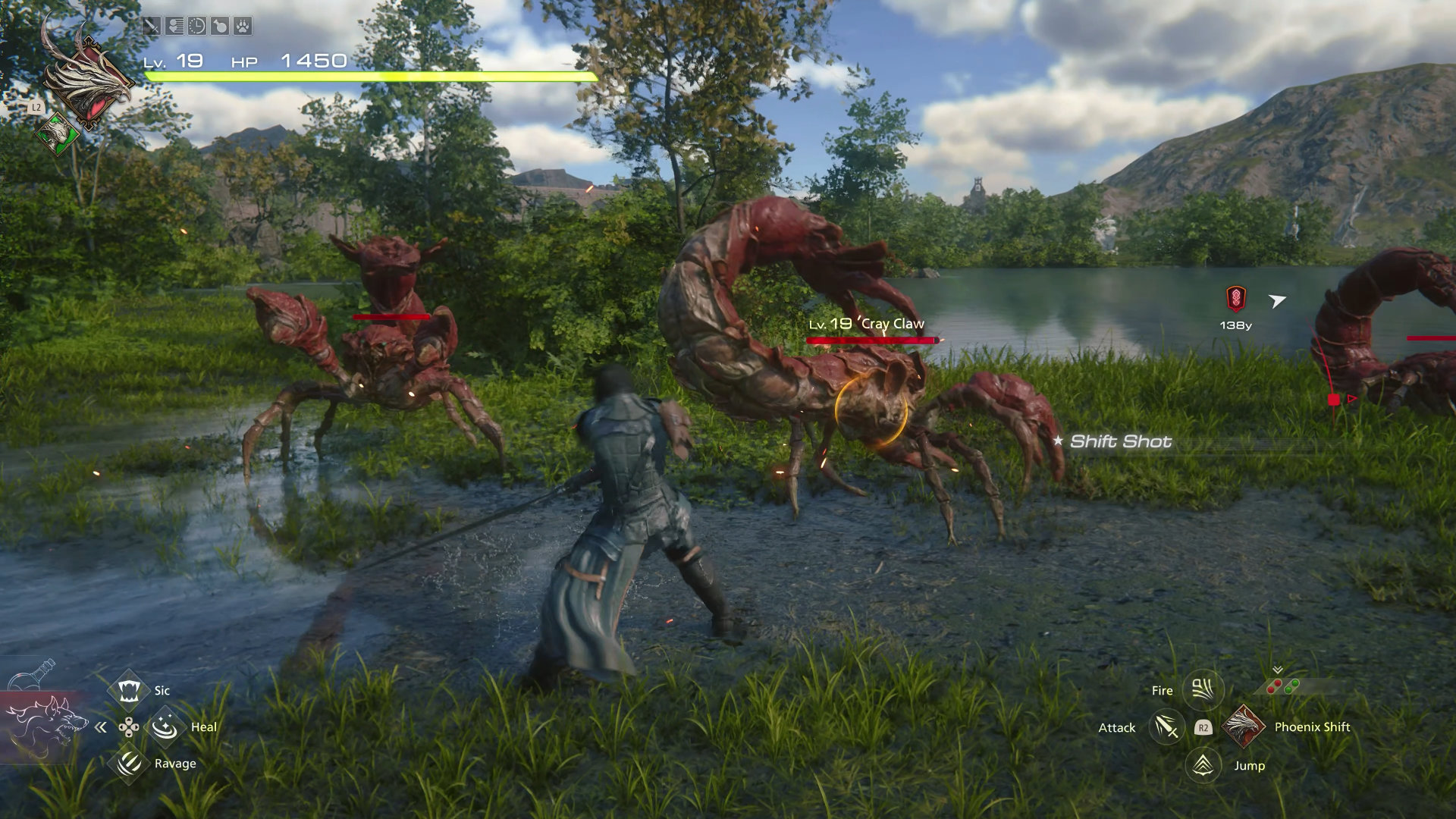
The section where I finally talk about the combat
With multiple Eikon movesets at our disposal, it’s finally time to dig into everyone’s favorite part of the game: the combat. I do like the combat overall, but I also think there’s massive room to improve here, should they iterate on this format in the future.
The gameplay systems of Final Fantasy XVI where largely designed to evoke the job system of Final Fantasy V — one of my personal favorites — which grants the player an ever-expanding roster of classes to apply to their party however they see fit, as well as the ability to mix and match abilities. And the influence is certainly there.
Over the course of the game you’ll unlock seven different sets of Eikon abilities, three of which you can equip at a time to swap between freely. Each Eikon comes with its own innate perks — Garuda has a grapple, Shiva lets you skate around and freeze enemies, Ramuh has a spell that’s literally just the Shotlock mechanic from Kingdom Hearts: Birth by Sleep, etc. — as well as four special moves that operate on cooldowns, of which you can equip two at at time. As a lifelong fan of games like Mega Man or Kirby where you have a lot of different powers to choose from, the variety here naturally appeals to me. It is, in fact, a lot of fun every time you unlock the flashy skills of another FF summon.
Similar to FF5, you can “master” Eikon spells so that you can equip them to other Eikon sets. Rather than needing to grind out a specific Eikon, this is done by simply investing enough points in the skill you want to master. And, conveniently, you’re free to refund the points spent on a given skill at any time, or even reset your entire skill tree, then put those points back into something else. This encourages you to experiment and try out new things, as you’re never locked into any one build for Clive.
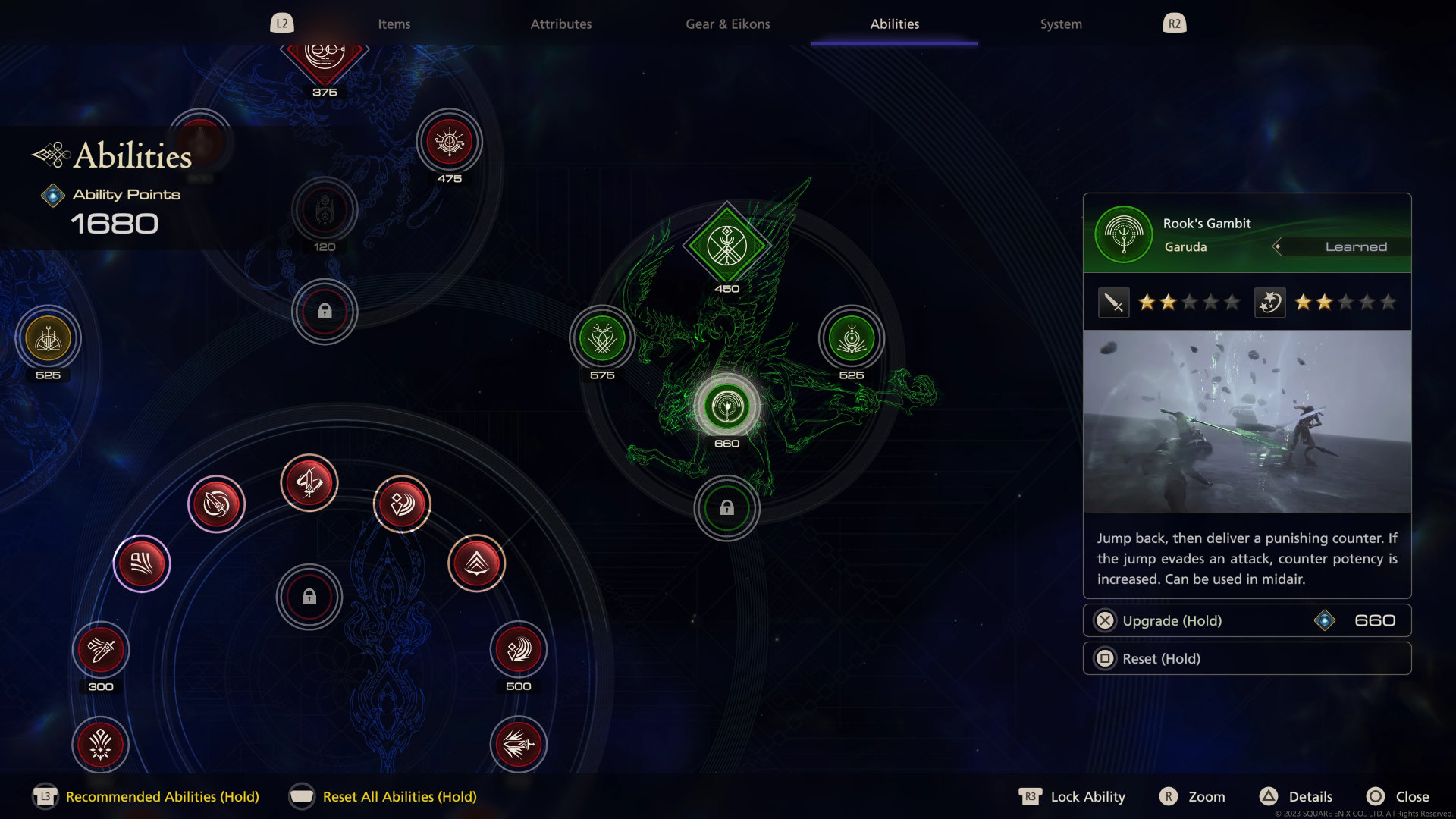
In theory, this means that there’s tons of room to customize Clive and strategize your builds. This is true to some extent. In practice, the encounter design in this game means you’ll rarely have any reason to do so.
The one that most people notice is the complete lack of elemental weaknesses and resistances among enemies, which stands out in a game themed around elemental powers. A common refrain is that it’s weird that the Bomb enemies, which are made of fire and thus normally immune to the element, can be killed with fire spells. As such, there will rarely be a scenario where any one set of Eikon skills will feel more useful than the others.
This also feels like the team’s MMO experience seeping through. Enemies in MMORPGs generally lack weaknesses and resistances so that all players, regardless of class, can do the same content. MMOs in the vein of World of Warcraft are decidedly not about stopping to rethink your strategy or coming up with your own build, instead generally focusing on doing your class’s optimal skill rotation. And, in practice, that’s kind of what FF16 devolves into as well. You’ll rarely need to think about what skills to use where, you just pop whatever’s off cooldown at the moment.
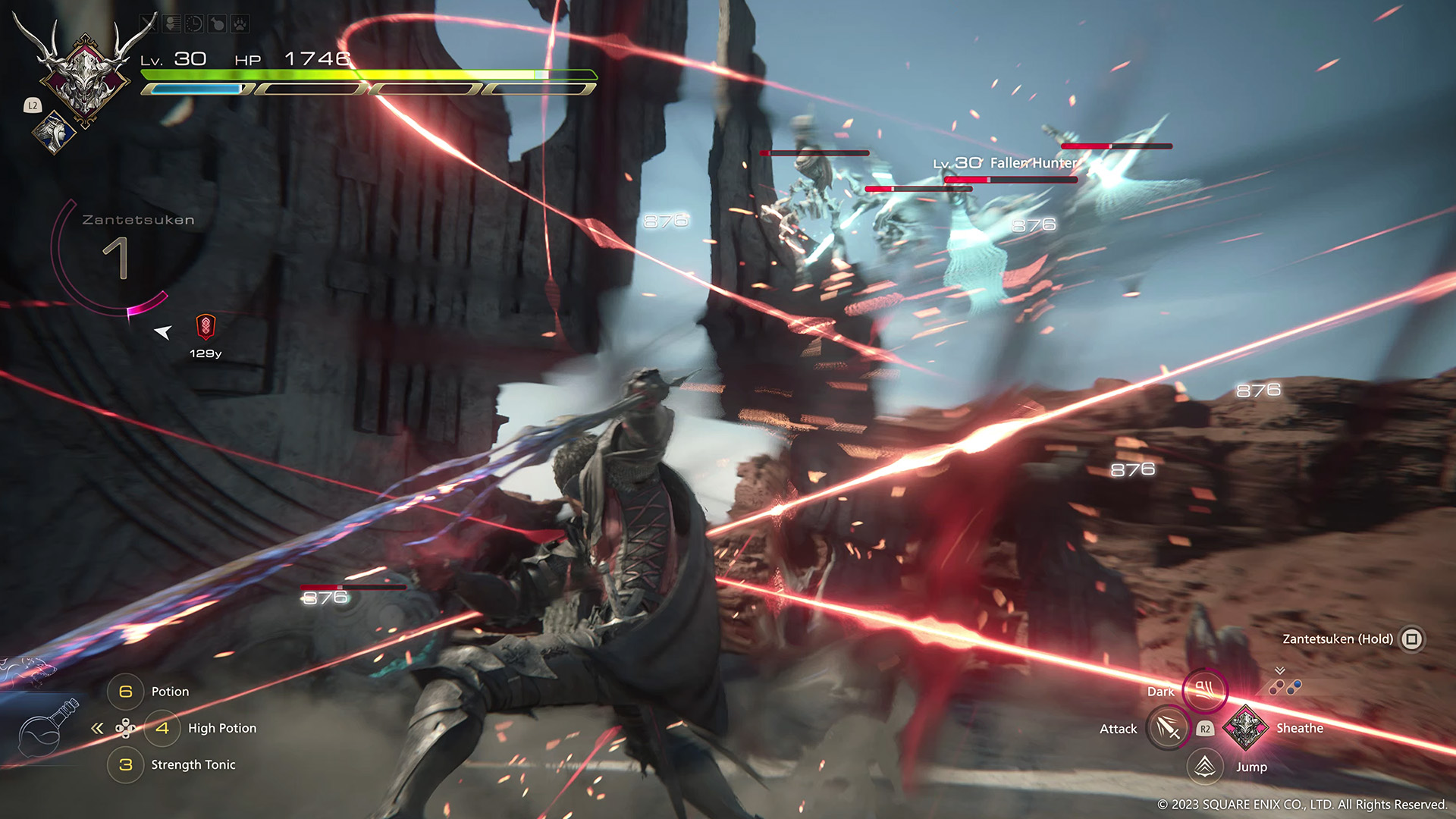
This is exacerbated by the fact that standard enemies are kind of a joke. In the early game, before you’ve maxed out any Eikons, many of them will feel like damage sponges with way too much health, but they rarely put up much of a fight. It was extremely rare for Anthony to need to heal against normal mobs, and he’ll readily admit he isn’t even that good at the game.
Setting aside the lack of elemental weaknesses, enemies (and encounters as a whole) aren’t designed to mix up your use of your basic skills, unlike the enemies in many pure action games. You’ll never really encounter a heavily armored enemy you need to hit with heavy attacks, or a high-flying enemy that needs to be knocked down with your ranged magic before you can hit it with other attacks, or an enemy that requires you to use the funny Goomba stomp move Clive has for some reason, or anything like that. Like an MMO, you just keep doing your rotation. While there’s tons of potential to strategize your build for Clive, when you’re actually in the heat of battle, I would argue that there’s less strategic thought required here than in proper character action games like Devil May Cry, Bayonetta, or Hi-Fi Rush.
By the late game, Anthony had unlocked Bahamut’s skill tree, and with it a flamethrower skill that magnetically pulls enemies towards its cone of effect, and even drags them along with you if you move. It felt like a flamethrower version of the Poltergust from Luigi’s Mansion. It was so effective that Anthony got into a habit of walking up to groups of five or so enemies at a time, popping this skill, and then literally putting the controller down in his lap for about ten seconds as he waited for them to die. At one point he said he was just playing as a W+M1 Pyro. Was this funny? Yes. But I don’t know if it’s particularly engaging gameplay.
Shockingly, the build guides I’ve found don’t even recommend using this skill, instead telling you to master Bahamut’s big fuck off laser attack and put it on another Eikon. This isn’t even a min-maxed build. It’s just a random build, and it eviscerated the game.
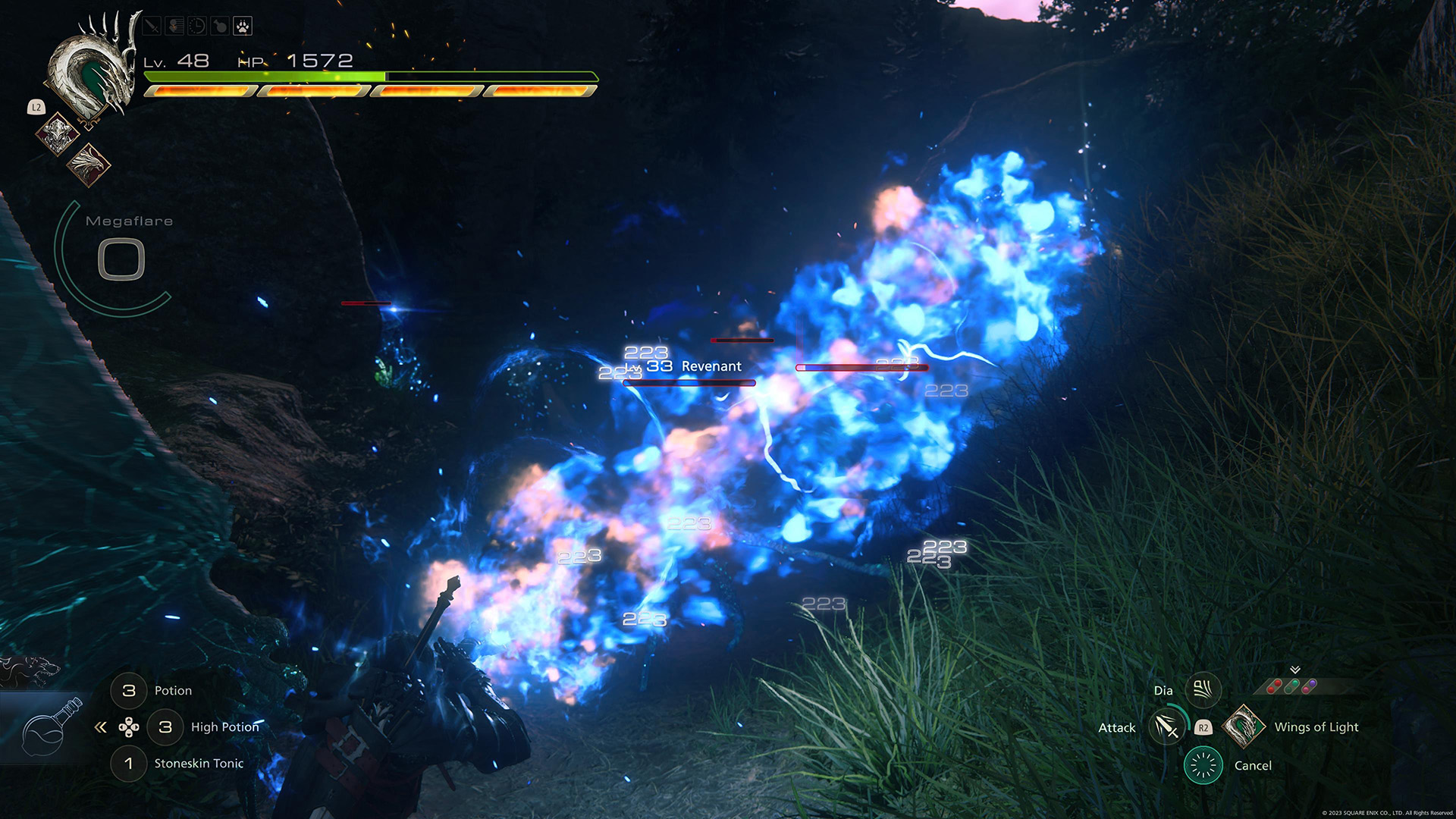
“But Bobby!” I hear some of you interjecting. “This is only normal mode! What about the harder ‘Final Fantasy’ difficulty?” Well, dear reader: you need to beat the game to unlock it, and we’re not playing through a 50-hour game twice in a row. Hardly anyone who plays the game is going to do that. It really, really should have been an option from the start.
To be clear: I don’t necessarily mind when an RPG is a little easy, or when you end up finding a dominant strategy that wipes the floor with most enemies. You can say the same thing about many classic Final Fantasy games. But, for one, the fun there is that you chose how to build your party to get to that strategy in the first place. It’s the payoff for the thought you’ve put into your party. Like I’ve been saying, it doesn’t feel like FF16’s default difficulty ever really makes you think about your build or what moves you’re using. And in an action game, I’m gonna want the action to be more engaging.
The other part, of course, is that I don’t mind an easy RPG if the story is carrying it for me. And I don’t like the writing in FF16.
When you start to think about it, there really are a lot of basic gameplay elements missing that could have helped add a little more depth. There are no status ailments or buffs. The only combo you have is a basic four-hit combo. There are no alternate weapon types, just a long string of reskins for Clive’s sword with a linear progression of strength upgrades. And, of course, there’s no customizing equipment, skills, or behavior on your “party members” whatsoever.
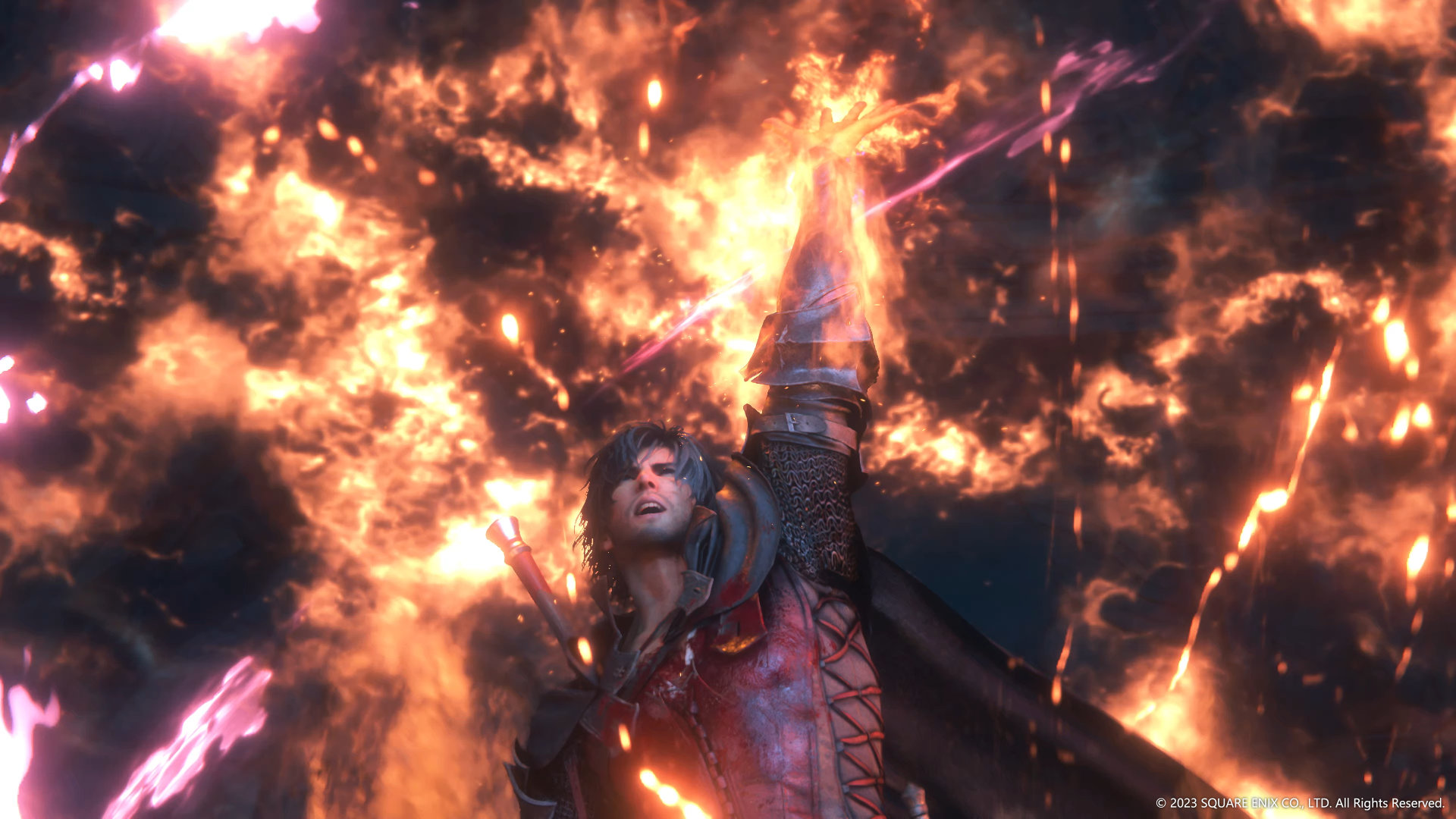
At the end of the day, for all my complaints, the combat is still pretty fun. The boss fights in particular are so chock full of spectacle that you don’t really think about things like a lack of elemental weaknesses or the fact that Clive can’t equip a heavier sword or whatever.
But on a personal level, it bothers me the way people act like this gameplay is an objective upgrade. It bothers me that people talk about the turn-based systems of previous FFs like they’re a relic of the past, an evolutionary stepping stone on the way to this, Square’s ultimate vision: a watered down version of a Platinum game. As if the mechanical history of the series doesn’t really matter so much as its aesthetics and vibe. As if turn-based combat is purely a compromise, and not an interesting avenue of design and play in and of itself.
I’ve already seen people retroactively declare the menuing of FF7 Remake to be an evolutionary half-step towards this, when I find the combat, encounter design, controllable party members, and character building options in Remake vastly more interesting. Yes, even the menus! I like the menus! I like stopping to think about my options. I like going into slow-mo and scrambling to get my Phoenix Downs out of my inventory with my last standing party member. I liked having a few boss fights that genuinely made me rethink my Materia loadouts. There is no part of me that considers that to be “lesser” to FF16’s fully real-time combat. They didn’t leave in the menus in Remake because they didn’t know how else to design combat, they put them there on purpose.
I’m not opposed to FF doing full real time combat, and I think FF16 is a decent attempt at this, but I’m still interested in what a game with this budget and graphical fidelity could do with an updated take on turn-based combat. But even mild preference for the turn-based systems of old is always met with the response of “What about Bravely Default and Octopath Traveler?” Well, you see, those games suck ass. I would like Square to make more new turn-based RPGs that don’t suck ass. But for all my complaints, I guess I’ll still take FF16 over the mind-numbing Bravely and Octopath games any day.
Anyway, speaking of things that suck ass, let’s get back to how this game treats its female cast.

Jill is also a character in this game
After Benedikta’s defeat, the game decides it’s finally ready for its female lead to wake up from her very long nap back at the Hideaway, and Jill joins the party.
I wish I liked Jill more. I really do. But it doesn’t feel like the game actually gives that much of a shit about her. Compared to Clive, who grows a ton and reveals new layers over time, Jill feels very thinly sketched as a character.
Jill Warrick was an orphan from a region consumed by the Blight. She ended up in the care of the Archduke of Rosaria, who “raised her like a daughter” without outright adopting her. In other words, yes, Jill is kinda sorta Clive’s step sister. And also his girlfriend.
Fun!
I’m gonna be honest, this is brought up so little that I forgot about it until fact checking to write this article. I remembered her as being just a vague family friend. But nope! She was “raised like a sister to Clive and Joshua.” So it’s not TECHNICALLY step sibling incest, but it’s juuuuuuuust close enough that it gets weird when you think about it. I’m not going to dwell on this any longer, but, again, make of this what you will.
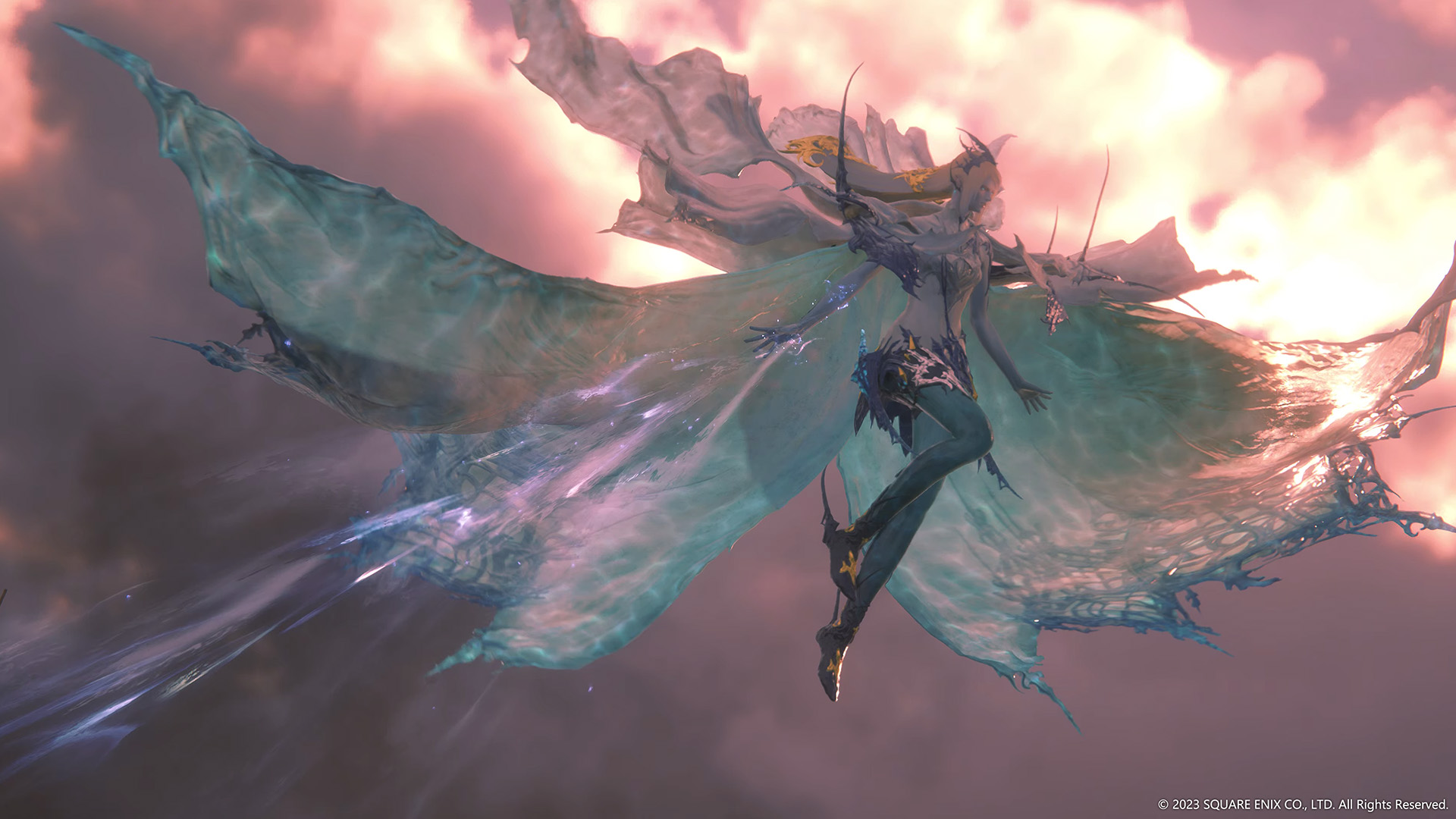
After the fall of Rosaria in the prologue, Jill and many other women were taken as slaves by the religious zealots in the neighboring Iron Kingdom. Lord knows what horrors she saw others experience, but she herself narrowly avoided being raped and murdered. In her own words: “I thought they meant to have their fun with me before the end… but the end never came. My powers awoke, and everything changed.” Those powers being Jill’s Shiva powers. The Ironbloods forced her to become their walking superweapon and commit mass murder for them on the battlefield as Shiva, using threats against children as leverage.
The game spends basically no time exploring this further in Jill and Clive’s reunion scene, as Jill immediately shifts the subject to Clive and his problems, resolving to accompany him on a journey back to Phoenix Gate to try and find clues about what really happened. This sums up her entire character. Jill’s trauma exists so that she can say she went through some stuff sort of like what Clive went through. They were both enslaved by evil empires for those 13 years, they both killed a lot of people with their Dominant powers and regret it. She has very little going on beyond being the person who tells Clive he should look after himself. She only ever wants what Clive wants.
If you held a gun to my head, I could not name a single personality trait of Jill’s that doesn’t come back to either her trauma or her relationship with Clive. (“Having cool ice powers” does not count as a deep personality trait.) I guess I would describe her as “nice.” If you catch me in a bad mood I might describe her as “the Family Dollar version of Ysayle from Heavensward,” even if that’s not fair.
Jill gets the most prominence in a story arc somewhere around halfway through the game. By now, Clive’s already come to terms with his past and the fact that he’s Ifrit’s Dominant, having set aside his revenge plot since he can’t really get revenge against himself. So at one point in their travels, Jill stops to all but say “Hey, you got your big revenge arc where you got to deal with your traumatic backstory. Now it’s my turn.” It’s an errand Jill needs to get out of the way before she can continue being Clive’s sidekick. And so they go do that. Because they were already heading for the hideout of the Ironbloods anyway.
It’s stunning how this subplot plays out. Jill wants to murder the High Priest of the Iron Kingdom — a character we barely see — for, well, everything. And so you go to their seat of power, and after the obligatory boss fight for Clive, Jill gets her big girlboss moment where she gets her revenge, and then that’s it. No further introspection needed. She’s sufficiently dealt with her trauma by getting her revenge. It never meaningfully comes up again. In a game that otherwise spends such a huge amount of its runtime contemplating the pointlessness of revenge, it’s such a thematic cop out. They don’t even free the captive Rosarian women they run into on the way in — as far as I remember, they’re last seen being boated out with the evacuating Ironblood soldiers.
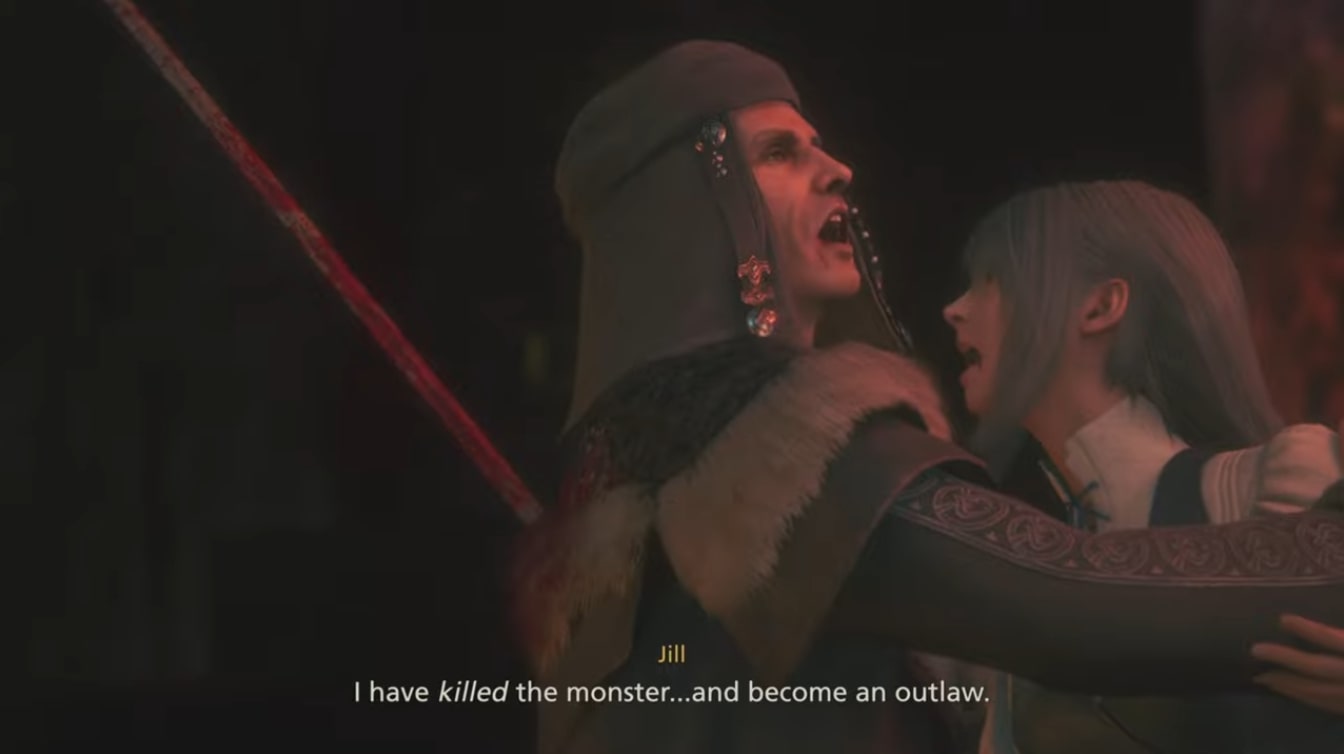
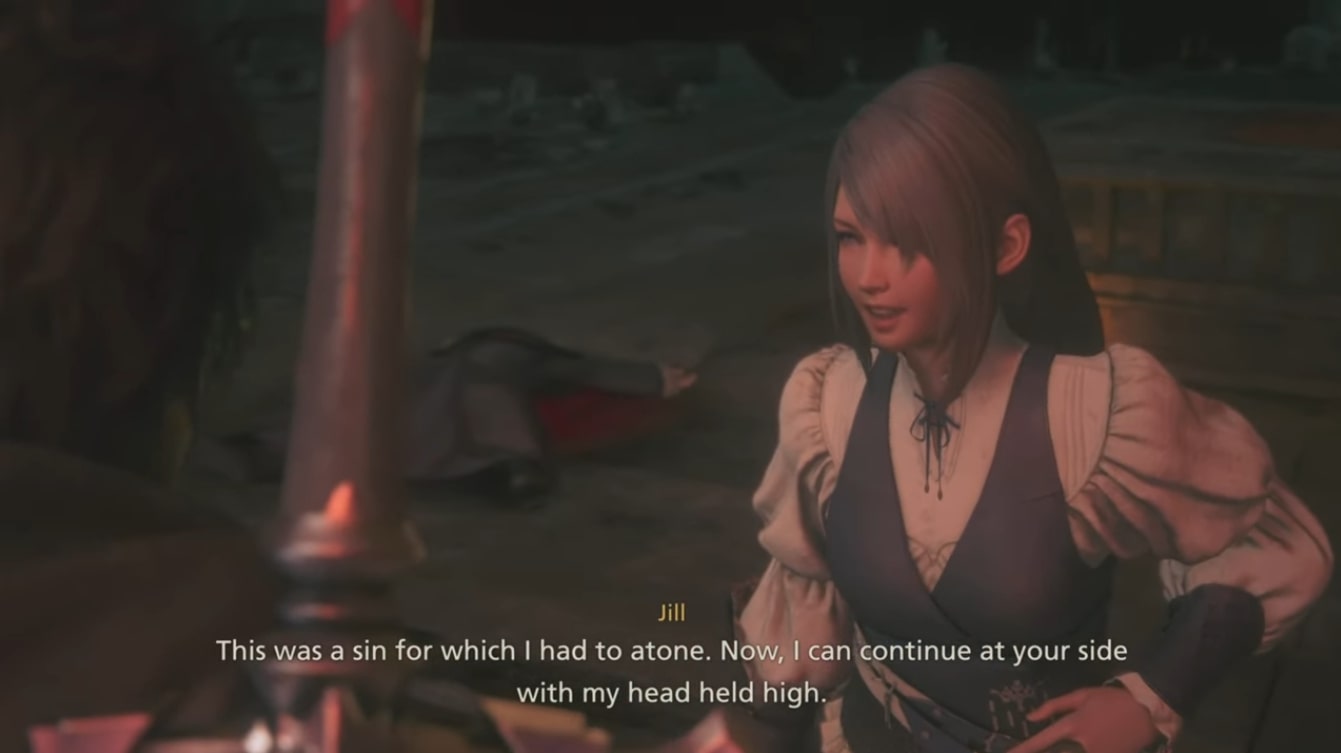
Jill’s characterization certainly isn’t helped by the general lack of a real party in FF16. While there are a handful of different companions who will shuffle in and out of your entourage over the course of your adventure, it’s usually just Clive and one other character (plus Torgal, who you can issue basic commands to via the D-pad). Jill rarely has anyone to bounce off of other than Clive because she gets benched whenever it’s time for Clive to hang out with anyone else. And, sure, Jill is probably the party member you’ll have at your side the most throughout the game, but it sure is easy to forget this when your companions always vanish for the many, many hours of side quest cutscenes.
Despite being the romantic leads in the Final Fantasy game where characters fuck, there’s extremely little physical intimacy of any kind between Clive and Jill. (Again, I’m trying to ignore the fact that they’re pseudo-step-siblings because the game sure does brush that idea under the rug.) In any other game in the series I would have no issue with this. But when the evil Benedikta is defined by her promiscuity, as are the many down-on-their-luck sex workers that populate the game’s various medieval towns, the fact that the heroic Clive and Jill’s love has to remain chaste and pure and largely implied despite both of them being grown adults in their 30s really sends a message.
They do get one major scene of physical intimacy, though.
Much later in the game, Jill will take one for the team, going Shiva mode to stall Odin’s Dominant, Barnabas. She’s defeated easily, and for a brief period she becomes his prisoner who Clive needs to rescue. (This makes her two for two when it comes to being captured by the male Dominants who serve as major arc villains, as earlier in the game she was captured by Kupka.) You chase down Barnabas’ ship and rescue Jill, Barnabas does a big Odin slash to part the sea, you lose a fight to him, and Jill helps you escape the dry sea floor before it becomes a wet sea floor again by making a big tunnel of ice. Okay, that part is cool, I will admit.
Washing up on the coast, we rejoin Clive and Jill that night as they have a heart to heart on the beach. In the nude. Because their clothes are wet. They have an emotional conversation that’s really all about Clive and how Jill worries about Clive, because that’s 90% of her character. After embracing him from behind in the nude, and finally sharing a kiss with him… she decides to share her Shiva powers with Clive so that he can unlock another branch on his skill tree.
Would it shock you to hear that, after sharing her powers, Jill is sidelined for the entire rest of the story?
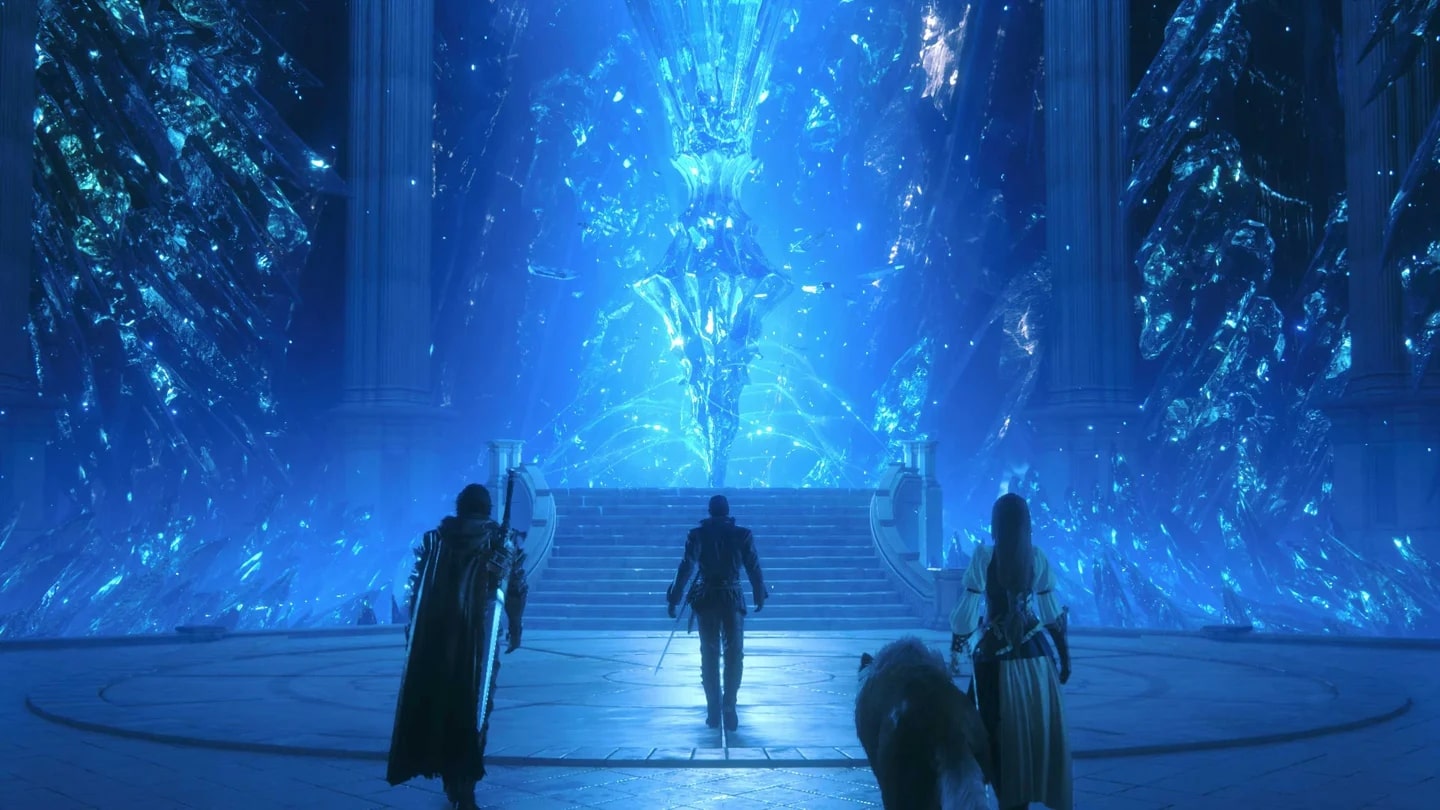
The Crystals and Cid’s big plan
I jumped ahead to summarize what happens with Jill, but now let’s return to the ongoing story. After Jill awakens, they take a detour over to Phoenix Gate so that Clive can accept in his heart that he’s Ifrit and unlock his Limit Break meter. Along the way they run into a bunch of shit that reminds them how bad slavery is and Clive has no meaningful reactions to any of it blah blah blah moving on
When they get back to the Hideaway, Cid reveals that he’s come up with a big plan to save the world, which will become the heroes’ main goal throughout the rest of the game.
We have to destroy all the Mothercrystals.
Yes, Cid has just suddenly figured everything out. The Mothercrystals, and all of the smaller crystals mined from them, are sucking the Aether out of the planet, and that’s what’s causing the Blight. There’s no meaningful buildup to this discovery. It’s a hilariously sharp pivot in the plot. Cid lampshades this by saying that other people had probably figured this out before him, but that it was perhaps considered an inconvenient truth. Subtle!!
How will this actually help the Bearers? Who fucking knows.
This is where the main plot stops really caring about the stuff with the Bearers, and where that whole element of the story completely falls apart. For one, as far as I can find, the powers of the Bearers don’t appear to be connected to the Mothercrystals at all, as they’re separate sources of magic granted to the humans of Valisthea by the gods. So it’s not like destroying the crystals will rid the world of all magic. If anything, you would think that, in a society supposedly reliant on magic like how we’re reliant on electricity, destroying one major source of magic would only put more pressure on the others that remain. It would only make people abuse the Bearers and their powers MORE, right? Maybe even triggering conflicts where nations fight to capture each others’ Bearers? And, sure enough, Cid admits that things will probably get worse for Bearers before they get better. I’m glad he at least understands this, but he really has no long-term plan. The game is just shifting into themes of environmentalism now and you have to roll with it. We’re doing Avalanche blowing up the Mako Reactors again.
While there have been many arguments over whether or not FF16 is “real Final Fantasy,” this really does solidify the feeling that much of its story is just a fairly generic greatest hits album of the series. We’ve got the crystals, heroic rebels, evil empires, a Cid, a pair of supporting characters who may as well be named Biggs and Wedge, the focus on the classic summons as godlike entities like in FF14, the main character redemption arc of FF4, gameplay inspired by the job system of FF5, a whole lot of allusions to Ivalice stuff, and now even the environmental conflict of FF7. While this has always been a series that riffed on recurring images and ideas, it’s hard to point to many things that are unique to FF16, aside from the Dominants and, like… an obsession with slavery?
As the story continues, the question of whether or not destroying the crystals is actually helping anything never goes away. Annabella, now the Empress of Sanbreque, will retaliate after Sanbreque’s crystal is destroyed by committing genocide on the Bearers across Rosaria. (Don’t bother trying to make sense of her logic there, because the game sure as fuck didn’t.) If anything, every destroyed Mothercrystal only seems to make the state of the world WORSE. It starts to feel like a story where a bunch of ecoterrorists are going around causing massive oil spoils. Sure enough, in the end the main villain will reveal that he created the Mothercrystals to stockpile Aether, and that destroying them was a necessary step in his grand plan to use said magic, for… some reason? But don’t worry, this doesn’t actually matter, because a last second deus ex machina will fix everything for everyone.
Yes, this is what the day one reviews meant when they said all the fantasy politics mean jack shit by the end because it just turns into a big save-the-world plot.
Speaking of said villain…
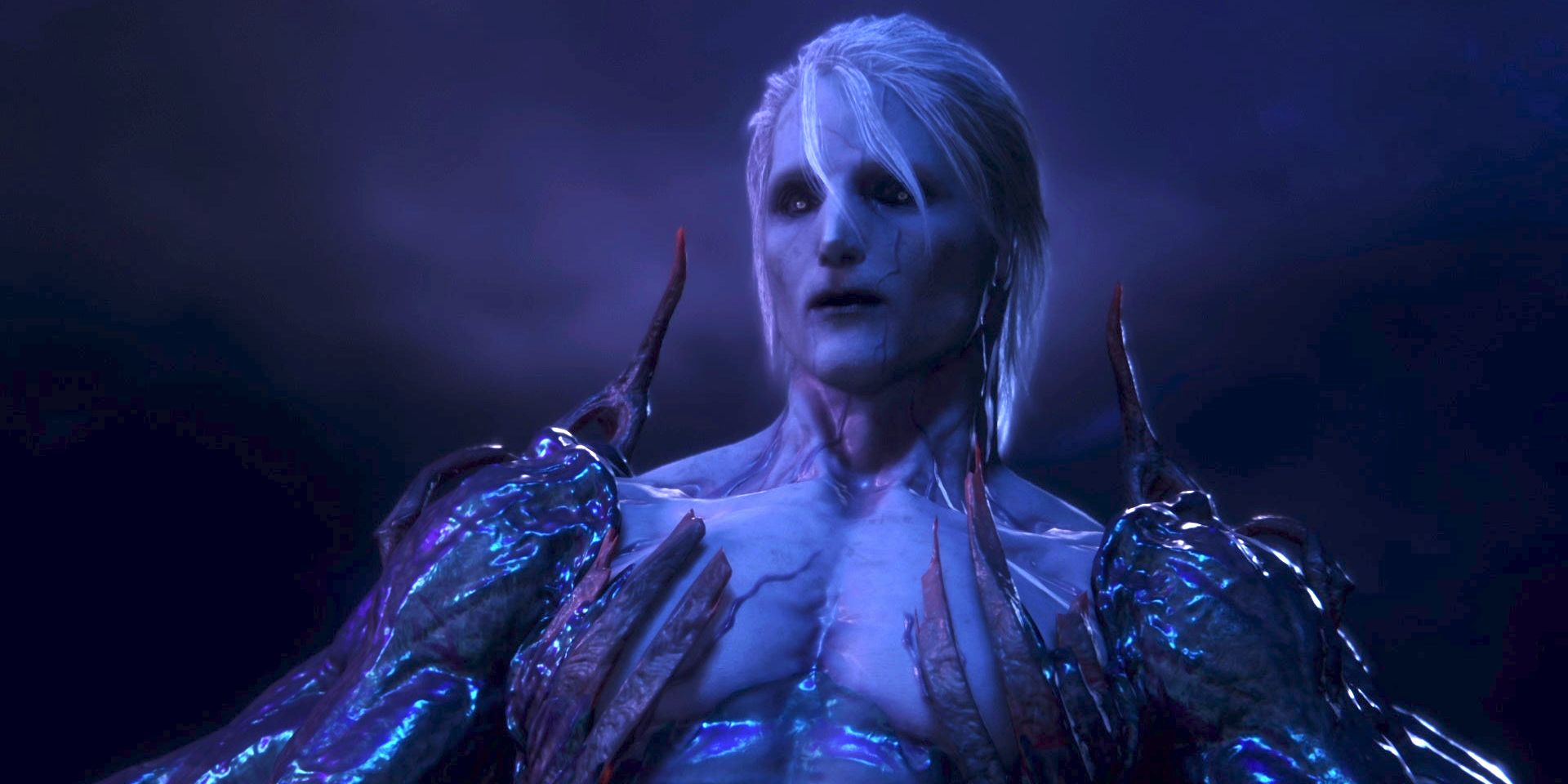
The Big Bad
When Cid, Clive, and Jill (and Torgal) arrive at the heart of Sanbreque’s Mothercrystal, the first Mothercrystal they intend to destroy, they have a surprise encounter with the entity who will become the true villain of the game: Ultima. You know, in case you couldn’t tell the devs really, really like Final Fantasy Tactics.
A lot of this info will be conveyed over the course of the three dozen hours or so that remain in the game, but for the sake of brevity, I’m just gonna summarize Ultima’s deal here.
While the stereotype is that every Japanese RPG ends up being about killing god, Final Fantasy tends to prefer having you fight someone who’s trying to become a god. Ultima, on the other hand, is the literal god of this world. At least, he’s the last of a group of immortal, immensely powerful beings (possibly aliens) who created humanity as his servants. Mankind had forgotten about him, with the only real clues to his existence lying in ancient “Magitek” structures underground (finally! the sci-fi shit everyone said TOTALLY wouldn’t be in the game!) that only the Dominants seem able to access. Now he’s back to collect on mankind’s tab.
Look. Is this cliche? Yes. Is this a total departure from the grounded tale of warring medieval nations that everyone thought they were getting into? Also yes. Is Ultima even that good of an FF villain? No. Do the specifics of his plan make any sense? Nope! But this is the part where I actually start to kind of like the main story. These RPG tropes became tropes for a reason: they’re fun! Maybe I’m just biased towards stories where characters are like “fuck your God, I’m choosing my own destiny” as a trans woman who grew up in Florida, surrounded by evangelicals. I won’t deny that factor.
Clive’s powers, as it turns out, are Ultima’s doing. He’s referred to as “Mythos,” who will become the perfect vessel for Ultima once he’s absorbed the powers of all the other Eikons. And so we have a central conflict for Clive: he needs to grow more powerful to continue defeating those who threaten his loved ones, but in doing so he’s potentially giving Ultima more power as well. Aside from the obvious FF Tactics allusions, I’m realizing now how similar this is to the plot of Jujutsu Kaisen. It’s very shounen. And you know what? All of my favorite parts of the game are the parts where it drops the half-baked politics and just goes full shounen. So I kinda have to like this, even if Ultima doesn’t have much going on as a character.
It probably helps that this sequence where Ultima is properly set up is so cool. First, after the crystal is destroyed, a portal suddenly opens and out crawls… this.
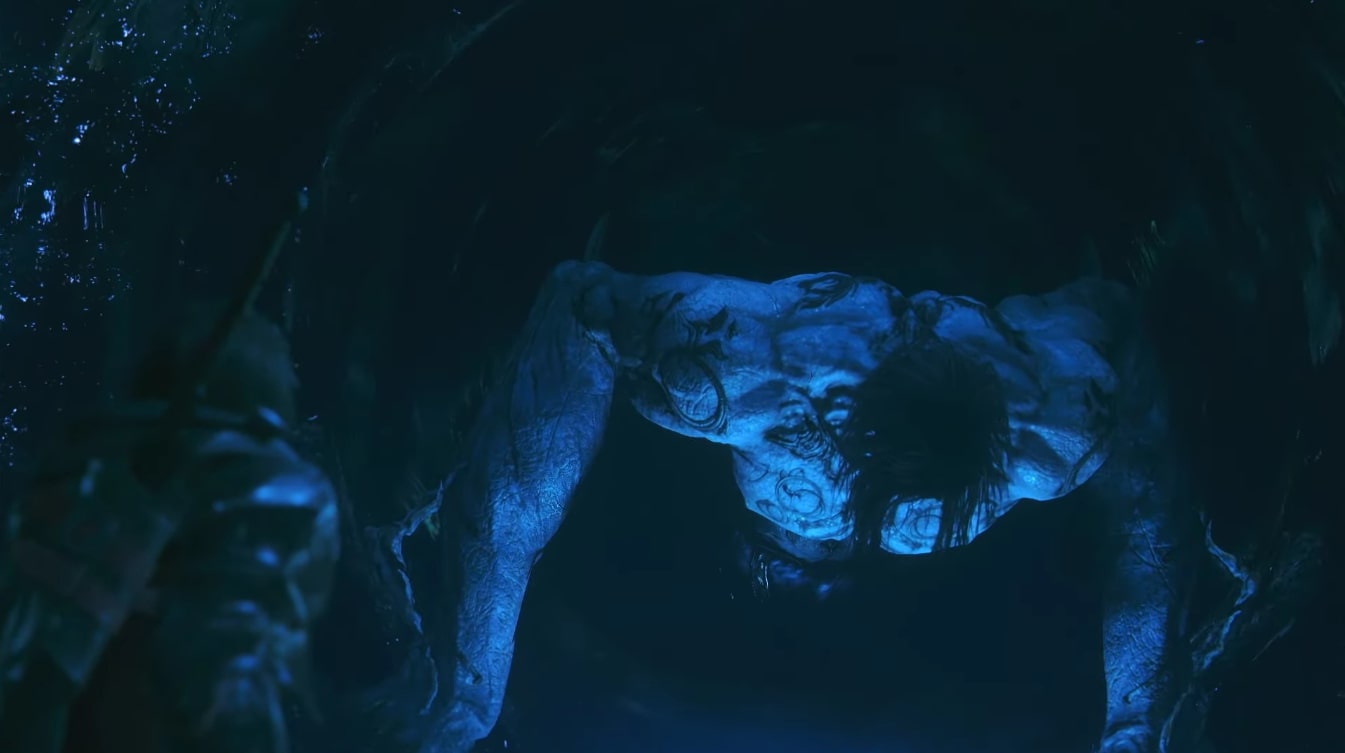
Then you get an sick boss fight between Clive in Ifrit mode and Ultima’s current vessel, Typhon, in some kind of surreal mindscape, with Typhon evoking the image of the crucified Lilith in Evangelion. An unspoiled first time player will have NO idea what’s going on.
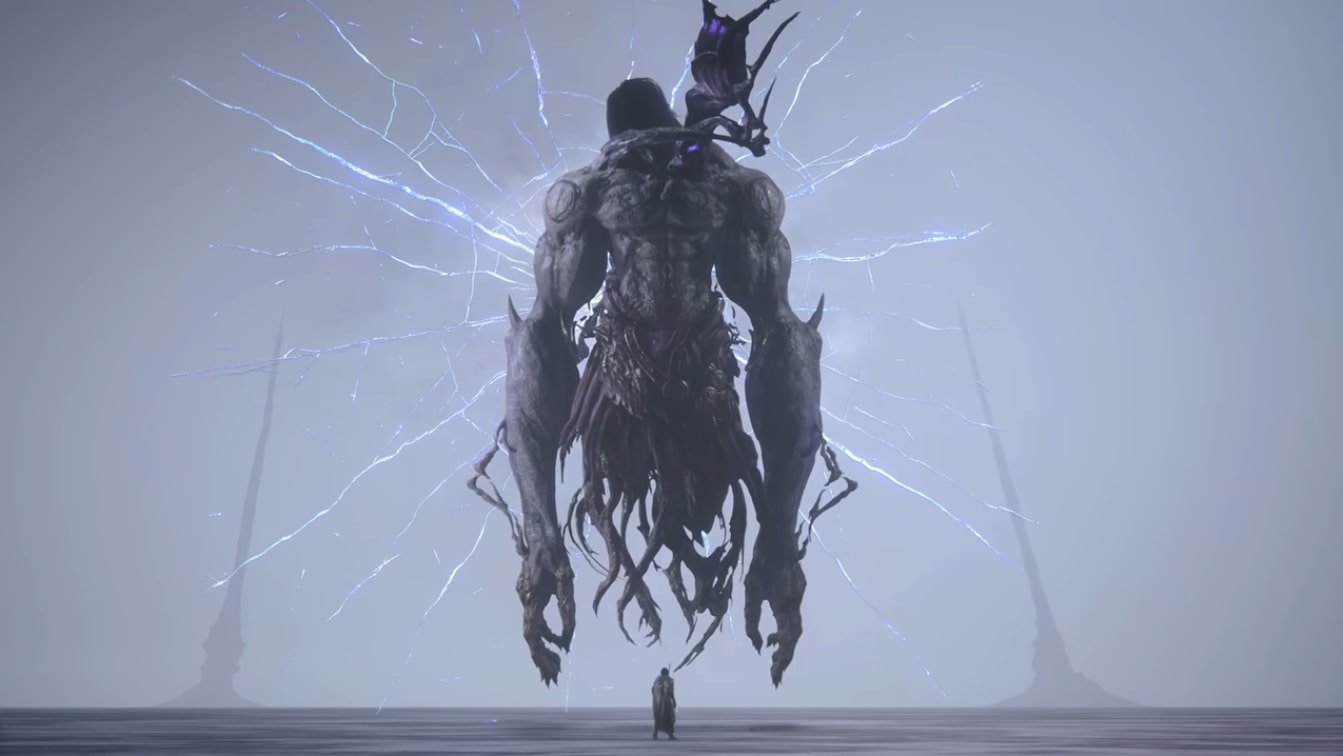
Like! After hours of dull talk about fantasy slavery, this REALLY shook me awake!

Fuck everything else, give me more of this!!!

Yes, I had to make my own gif to convey how goddamn cool this part is. No, I do not give a fuck that it’s just a string of quick time events. The QTEs in this game rule.
Anyway, uh, after all this Cid dies, succumbing to wounds he’d suffered from Typhon. It’s sad. I don’t have much more to say about that. Ultima tries to take an unconscious Clive as his vessel, but the all-grown-up Joshua finally steps out of the shadows and swoops in to save the day, sealing (a part of?) Ultima within himself instead. The Mothercrystal evaporates. Kupka’s forces attack the Hideaway. And we flash forward…
…another five whole years.
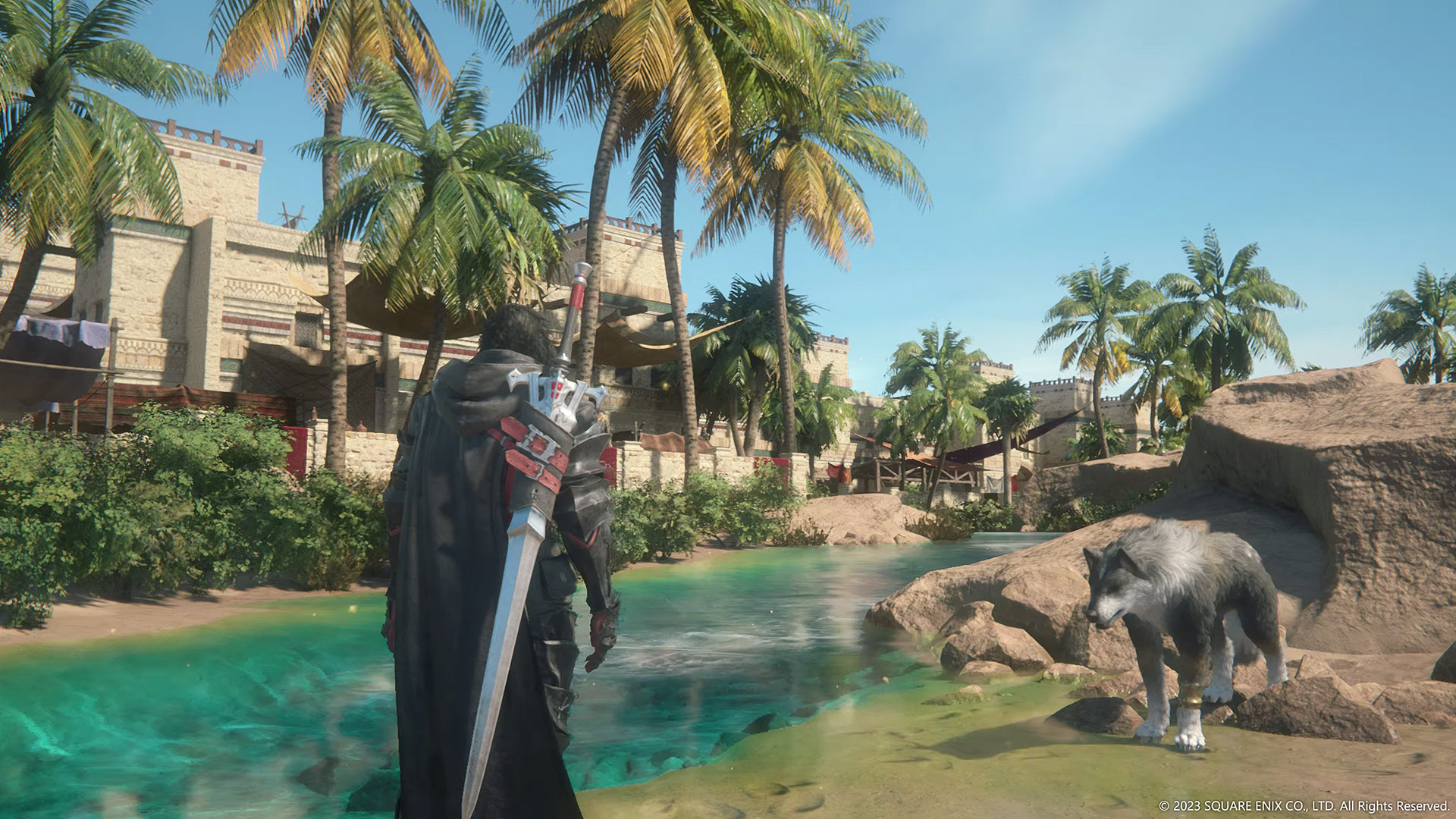
The timeskip, and the shape of the rest of the game
Riding high following the sheer fun of the Typhon fight, we rejoin Clive five years later, now having taken on Cid’s role as the leader of the relocated Hideaway. To the rest of the world, Clive is known simply as Cid the Outlaw.
This timeskip is maybe one of the smartest story decisions in the game, as it allows Clive to become a different, better character. Once a lone swordsman who only cared about revenge, Clive is now a rebel leader with strong convictions. He becomes a much warmer, more compassionate character who’s looking out for the people in his care at the Hideaway, and who fights for a just cause regardless of what the rest of the world thinks of him. He’s still kind of gruff, but he’s also earnest and a bit of a doofus in an endearing way. It’s not at all the character I expected him to be going into this game, but I welcome this change nonetheless.
Also, he finally got rid of the damn Brand on his face, so every random NPC can stop demeaning him! Hooray!
The rest of the game will see him on a quest to destroy the four remaining Mothercrystals one by one, and along the way he’ll inevitably have to fight the remaining Dominants — Titan, Bahamut, and eventually Odin — for one reason or another. While this all happens, Ultima continues to watch as his scheme comes closer to fruition.
After a long string of events, the next major boss will be Kupka, Titan’s Dominant, since he now has it out for “Cid” after the death of Benedikta. It’s personal for Clive, too, since Kupka destroyed the previous Hideaway before the timeskip, forcing them to relocate. (Not that any named characters seem to have died in the massacre.) While Kupka seemed to be a bit more intelligent than his role as the big meathead would necessitate, he unfortunately becomes kind of a rageaholic here and flattens as a character. He often reminds me of Tuco from Breaking Bad. I don’t know if that was intentional.
Regardless of his character, the important thing is that you eventually get to fight his Titan form. And afterwards, when you think he’s defeated, he instead decides to absorb the nearby Mothercrystal core, a thing you didn’t know Dominants could do, to become an even more titanic Titan.
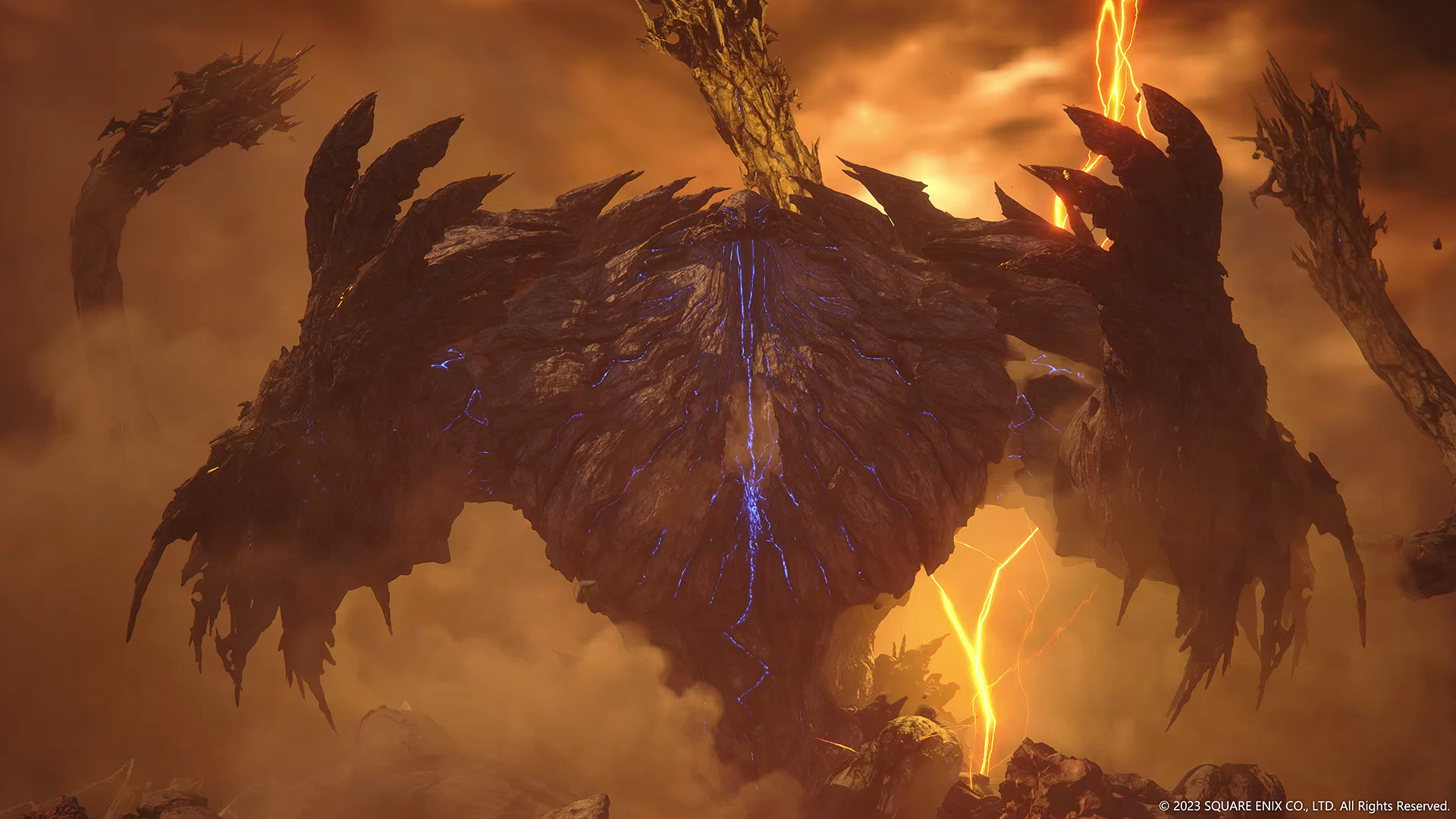
This part OWNS, with my favorite part being when the mountain-sized Lost Titan shoots out mile-long tendrils of earth that Ifrit chases him along while dodging incoming attacks. But this is only one small part of a knock down drag out multi-phase fight that’s full of great set pieces.

While looking at this, be sure to remember that Ifrit is kaiju-sized.
With every new Ifrit fight I was becoming more and more fond of the main story. Does the writing about the more Serious parts get that much better here? No, not really. That shit I talked about with Jill is spread throughout the rest of the game, for instance, as is the confirmation that the box Kupka was crying over contained Benedikta’s severed head. But by this point I’d seen enough fun parts that I was willing to just kind of roll my eyes at the lame stuff while going along for the ride. I had given up on this story being good Dark Fantasy and was now judging it as lighter fare.
But like I said up top, this is a game of extreme highs and lows. And unfortunately, this is where the game dramatically ramps up the frequency and density of its absolutely awful side quests.
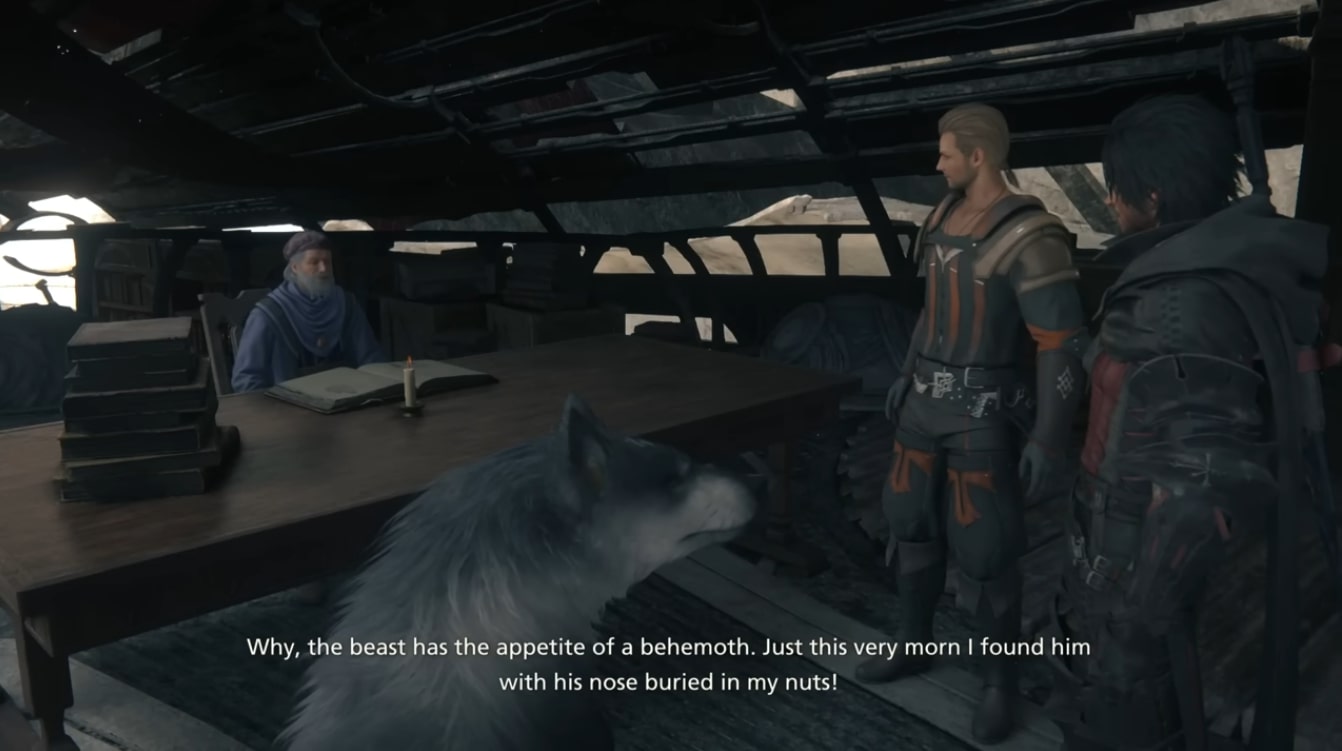
I think someone needs to go to jail for cramming this game so full of shit ass side quests and no Yuji Naka cannot be the scapegoat
The line that’s being repeated ad nauseam about the side quests by the game’s biggest fans is that you should do them because they “help flesh out the worldbuilding and lore.”
Sure, some of the quests might flesh out the folks around the Hideaway, who I like decently enough, or they might give you a little tidbit of info about the region you’re in. I will admit that I found a few of them mildly interesting, particularly some of the ones at the very end of the game.
But most of the time the world of Valisthea, when divorced from the heightened theatrics and big battles of the main story, is so agonizingly boring that there’s barely anything there to flesh out in the first place. It’s one of the dullest medieval fantasy settings I’ve seen in years. None of the towns are particularly imaginative, and the townsfolk that populate them feel completely stock. You’re perpetually stuck in the world’s most boring and least colorful renaissance faire. This isn’t particularly GOOD worldbuilding, it’s just a LOT of worldbuilding, and those are not the same thing. Most new things I learned about the setting made me want to hear less about it.
Even when there was interesting info buried in these quests, I found myself wishing they would have just delivered some of this info via one-off dialogue scenes, rather than turning every single thing into a fucking fetch quest sandwiched between multiple slow, boringly staged, wordy cutscenes that all had to be fully voiced. It all just blurs together into miserable Cockney sludge.
At their worst, some quests feel actively harmful to my enjoyment of the world. Take, for example, a quest involving goblins in Dhalmekia. A guard reveals that he’s protecting a group of goblins that had stolen some food, as they don’t mean any harm. They aren’t native to the desert and are struggling just to survive in the unfamiliar environment, just like everyone else. Clive, who’s been slaughtering goblins without a care in the world throughout the game because they’re “beastmen” who can’t speak any discernible language, is surprised to learn that they can be communicated with. He agrees to leave them be. Quest complete!
Twenty feet away, you’ll run into some more goblins you need to kill for another quest.
The vast majority of side quests boil down to “go there, pick up an item, come back” or “go there, fight this group of enemies, come back” with no interesting twists along the way. You’ll find so many people you need to save from random bandits. Oh no, the hot spring is too hot! You go to the source of the water and there are Bombs. You kill them and go back to town, problem solved. Yakuza-tier side quests, these are not. Later in the game, as the state of the world worsens for plot reasons, many quests just send you to different locations that have been flooded with Aether, causing any non-magic user in the area to become “Akashic” — mindless thralls of Ultima — that need to be slain. I damn near lost it when one quest involved killing not just bandits or Akashic, but Akashic bandits.
The counter-argument to all this, of course, is that there are plenty of other games I like with simple side quests that aren’t particularly thrilling, yet I don’t feel the need to go on a lengthy rant about those. The differences to me, when looking at something like Tears of the Kingdom or the original Xenoblade Chronicles, are in the world and objective design.
In those games, the side quests are often just excuses to get you back out into the world, where you’re likely to find many other things of interest along the way. FF16’s barren maps give you no reasons to explore and nothing else to do other than your current objectives or fighting trash mobs, so it becomes a rote process of fast traveling to the spot marked on your map, grabbing what you need, then returning, with no interesting distractions along the way. You’ll never stumble upon any treasure of particular interest or any fun secrets. You’ll never randomly stumble upon a new side quest, either, because the game directs you to every quest giver via green icons on your map. FF16 also generally only spawns quest objectives upon accepting a quest, meaning you’ll never already have the items you need, nor will you be asked to get an item that’s available from multiple sources and allowed to acquire it how you see fit. It’s always a specific, boring errand.
Yes, these are, in fact, MMO-style quests. Even the main story constantly breaks up its major events with padding like this. I tolerate it in an MMO, where I’m really just judging it against World of Warcraft, but in a singleplayer game I’m gonna have higher standards. And even FF14 had more enjoyable quest lines than these, like the better Job storylines or Hildibrand’s detective hijinks. These just made me desperately want to get back to the parts where Ifrit does a Hadoken, or perhaps a Spirit Bomb.
Tons of FF16 side quests also just exist to remind you of the poorly written slavery stuff, particularly now that the main story has completely stopped giving a shit about the Bearers.
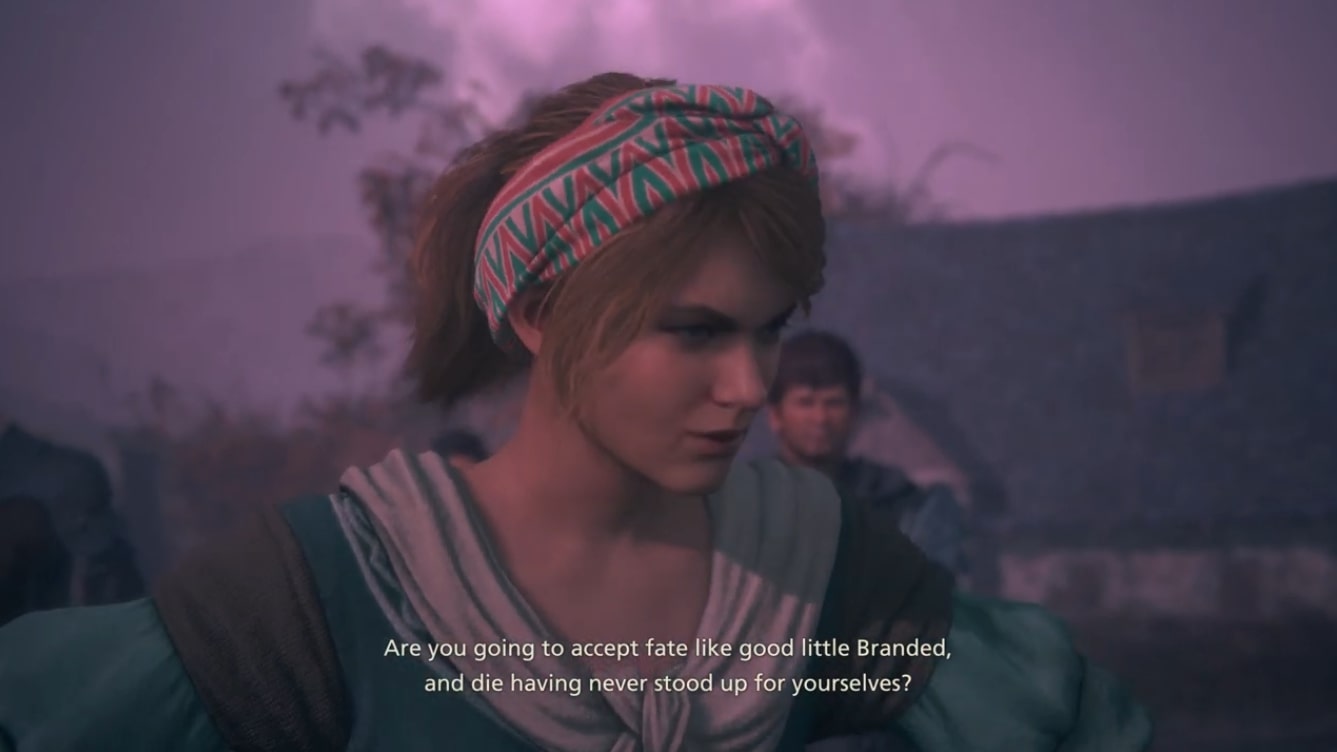
The second part of the “Rekindling the Flame” quest line takes you back to the small Rosarian village of Eastpool, which was full of bigots earlier in the game before everyone was slaughtered by… I wanna say Sanbreque? It was one of the evil empires, it doesn’t fucking matter. Anyway, later, the abandoned village is given to a group of freed slaves who need somewhere to stay.
When you return for this particular quest, your local allies bemoan the fact that the freed Bearers don’t know how to take care of themselves after a lifetime of servitude and have no motivation to do basic chores, and as such the town is beginning to fall back into ruin. Anyone who knows even a little about American history should probably be extremely uncomfortable reading that sentence, because it kinda, you know, mirrors actual arguments that were made against the abolition of slavery? In real life? It’s literally a myth slave owners made up to justify continuing to own other people as property.
Soon, Akashic threaten the village, the freed Bearers refuse to help because they think they’ll just be used as meat shields (wonder why they might assume that?), and they have to be angrily lectured at to join the fight. Afterwards, they all apologize for not taking good enough care of their new home and not having enough work ethic and promise to redouble their efforts to fix the town.
It suuuuuuuuuuuuuuuuuuuuuuuuuuuuuuuuuuuuuuuucks
I could have written an entire lengthy article about shitty side quests in FF16 that highlight how badly it handles its slavery plot. How about the one that reveals that some of Clive’s allies in the desert are just going to slave auctions and buying individual slaves to free them instead of, you know, fighting the system itself? Killing the slave auctioneers? Helping Bearers fight their masters? Anything! How about the quest line where a beloved pillar of the community in the main desert town is revealed to have secretly been a Bearer all along, and they turn on him so suddenly and dramatically that they start stoning him and trying to run him out of town? But then the day is saved when a couple precocious kids give a rousing speech about how he’s a model minority who’s actually really useful to have around because of all the work he does for the town. How about the quests revealing that Clive’s dad was SUCH a good guy because he wrote a letter saying he wanted to free his slaves, but the time was just never right to do so, so he didn’t. But he REALLY wanted to, you guys, honest! He was one of the good ones just like Clive, which is why Clive’s main outfit for most of the game is his dad’s old armor. How about the one where Clive’s uncle assures another noble trader that Clive’s rebel outlaws aren’t actually interested in changing any of the systems of power around Valisthea or overthrowing anyone?
I could go on and on and on about this sort of thing. I’ll spare you.
When it’s not doing shit like that, I often find that the side quests let down the dark fantasy tone of the game by being completely unwilling to end on a low emotional note. Take, for example, a quest where minor recurring ally Quinten decides to finally get together a mob to go kill the Sanbreque justice who murdered his family — and who also hunts Bearers for sport. Clive isn’t invited for no particular reason, so when it turns out the justice has a monster guarding his front door, Quinten ends up getting dozens of people killed. He gets his revenge, “cutting the man from ear to ear,” but feels empty. All those people died for nothing. And to make matters worse, while he was away, his whole town was Aether flooded and everyone turned Akashic.
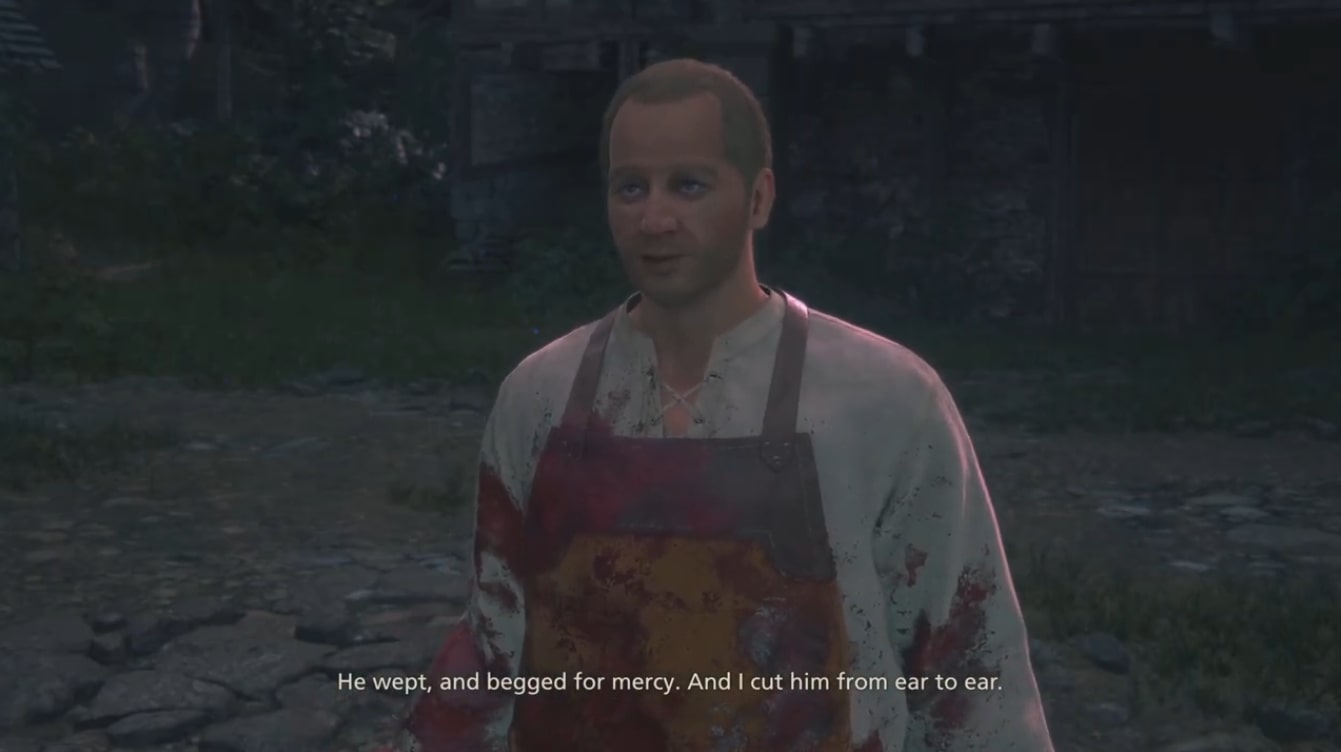
How does this extremely dark quest end? Oh, with a handful of survivors from the town giving Quinten a pat on the back and a hokey little speech about how they’re a family, and they’re gonna build a new Lostwing somewhere else that’s gonna be even BETTER than the old Lostwing! And of COURSE Quinten still gets to be in charge even after getting all those people killed due to a lack of foresight! Quest Complete, here’s your EXP and gil!
Oh, and this quest line is named “For Great Justice.” Just to cap it all off with an All Your Base joke.
Even the backdrops to these quests do them no favors. While FF16 is capable of being absolutely beautiful with some of the prettiest forests I’ve ever seen in a game, they decided the worsening state of the world in the back half of the game needed to be accompanied by a permanent weather change: the whole sky above every map turns an unnatural pinkish, purplish, grayish overcast. Everything will also occasionally undulate into and out of slightly more intense pink lighting as the clouds move past the sun. While this is striking at first, and it would have been acceptable as an endgame world state, it gets VERY old over the dozens of hours of fetch quests that are constantly unlocking throughout the back half of the story.
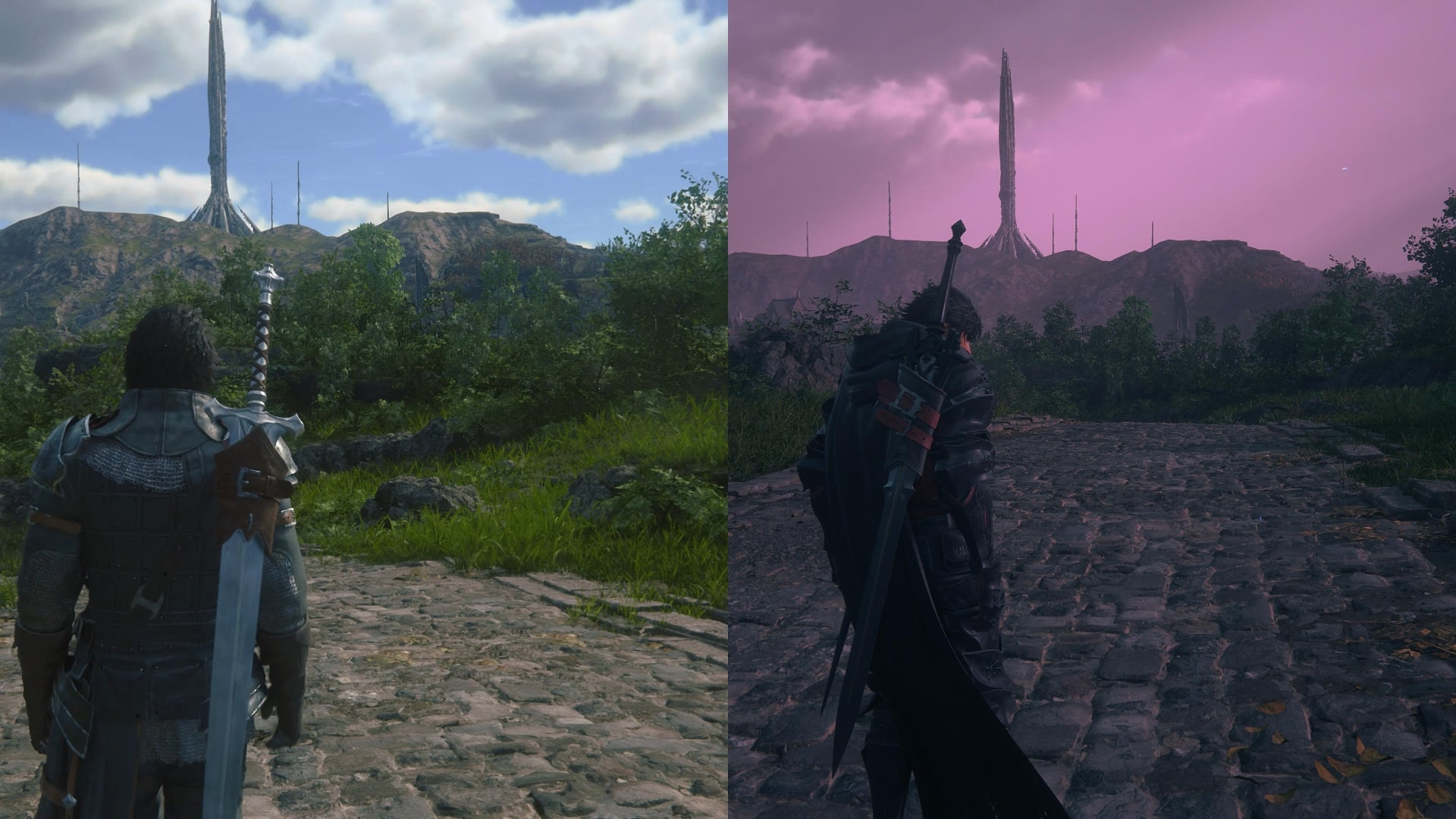
Speaking of which: the pacing at which quests unlock is horrendous. In the long portion of the story slowly building towards the confrontation with Barnabas, which takes place after this weather change, it feels like you can’t do ten minutes of the main story without unlocking another wave of side quests that will take an hour or two to complete. It’s maddening. I wanted Anthony to start skipping these so bad, but it felt like such a crapshoot whether or not anything important might happen in them that he felt he couldn’t risk skipping them.
Sure enough, when you reach the point in the main story where you can go fight Ultima, several hours of fetch quests unlock all at once, because the conclusions to most characters arcs’ were shoved into side quests instead of being woven into the main story.
Dear reader, I am giving you permission now: you don’t have to do all the side quests. If it’s for a character you like? Sure, do it. And similar to in XIV, if a quest is marked with a plus sign, that means it unlocks something. Do those. Skip the rest if you value your time, or if you don’t want to completely ruin the pacing of the main story.
The hunts are fine, though.
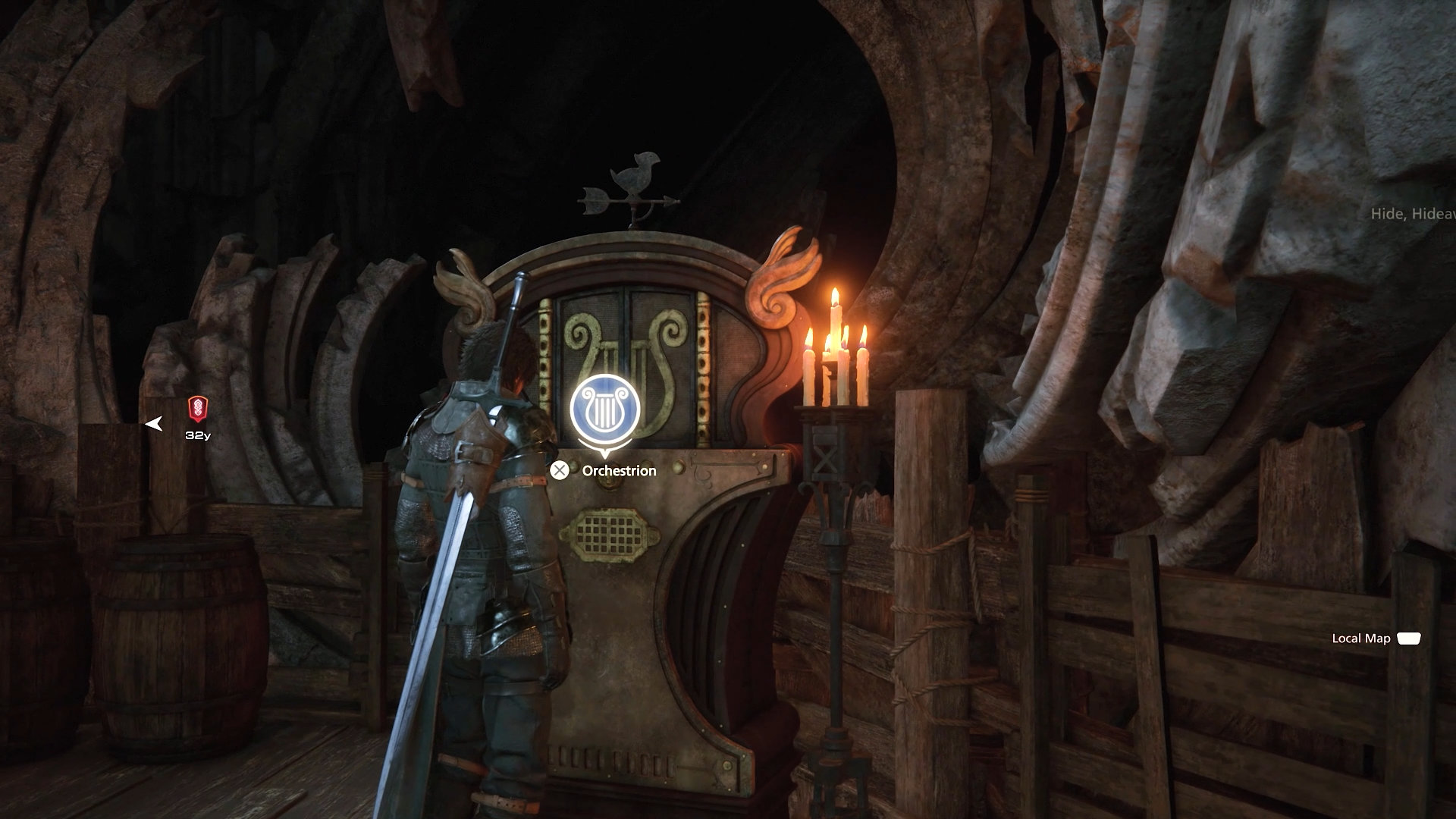
The music
This might actually be my most controversial take here. I like the soundtrack. It’s great. It’s Soken, so of course it’s great.
…But as a whole, is it his best work? I would say it isn’t.
Now, don’t get me wrong. There’s a lot to like here, from more laid back area tunes to the bombastic orchestral battle themes. In particular, the theme that plays for the Eikon battles stands out as a favorite, as does the final boss theme, which of course has to go hard as hell. I’m praying that these make it into Theatrhythm as DLC. But I think a lot of it feels kind of…safe? It leans VERY heavily into that “epic orchestral score” sound with blaring brass and awe-inspiring choirs and all that. The expected sound of high fantasy. And Soken’s great at that stuff! But while it all fits in the moment, very little of what’s here stands out in my memory, and I haven’t had the urge to listen to much of it outside the context of the game. Mostly, I’m left wishing this soundtrack had more stylistic variety.
I also just wish it had more rock. I’ll admit that’s extremely subjective, but well, that’s music taste for you. I usually enjoy it the most when RPG battle themes (particularly boss themes) go for orchestral rock, or full blown metal or prog or whatever, over a pure orchestral sound. I’m a sucker for tracks like Xenoblade’s “Mechanical Rhythm” or the Lufia 2 boss theme. I hated Octopath Traveler, but I will rock the fuck out to “Decisive Battle II” ALL DAY. Give me those guitars! And I don’t want to reduce this to an Uematsu comparison as if every FF soundtrack needs to copy him, but like, if you give enough of a shit to be reading this article at all then you’ve probably got at least half a dozen iconic, proggy boss themes by Uematsu memorized. If the soundtrack had gone in a totally different, more creative direction in terms of style, I probably wouldn’t be here complaining about a lack of electric guitars — but it didn’t, so I am.
Soken does, in fact, mix it up on a few tracks that evoke the types of sounds he’s famous for thanks to the FF14 Primal boss themes. The surreal fight against Typhon is set to an electronic track that makes it feel truly otherworldly after 12 hours of orchestral music. This is not a place you’re supposed to be, or a layer of reality you’re supposed to see, and the music drives that home. Later, Titan gets a new set of industrial rock themes with heavily filtered vocals that make his boss fight truly spectacular. These are moments that made me sit up, and I suspect that the intentional genre shifts were chosen to try and accomplish that. These are characters so powerful, so full of magic, that they completely break the genre of the soundtrack. I get that approach. It’s cool! But if that’s the case, I wish he would’ve done that a few more times for later, even more powerful bosses, instead of only doing it twice.
I just feel like Soken’s work on FF14 has way more variety. There’s nothing like “Ink Long Dry” or “A Long Fall” or “What Angel Wakes Me” on this soundtrack. And I think that lack of variety means that a lot of the strong orchestral work on this soundtrack doesn’t stand out as much as it should. I’d be curious to know whose choice it was to have Soken hold back like this.
The one thing that does seem to be a common critique of the soundtrack, though, is its overuse of classic FF motifs. Fans of FF14 will no doubt be used to hearing reinterpretations of The Prelude or the Final Fantasy main theme, but I find them a bit overused here, particularly when the emotional farewell before the final boss is set to the series’ main theme as a nostalgia play instead of any tune more directly tied to these characters. What really bothered me is that the main theme for Ultima is just a slowed down, minor key version of the Final Fantasy I overworld theme sung by a choir. It plays any time Ultima shows up or characters start talk about ancient lore regarding gods. I give this stuff a pass in FF14 because the whole point of that game is for it to be a pastiche of the series in MMO form, but here it always took me out of the scene.
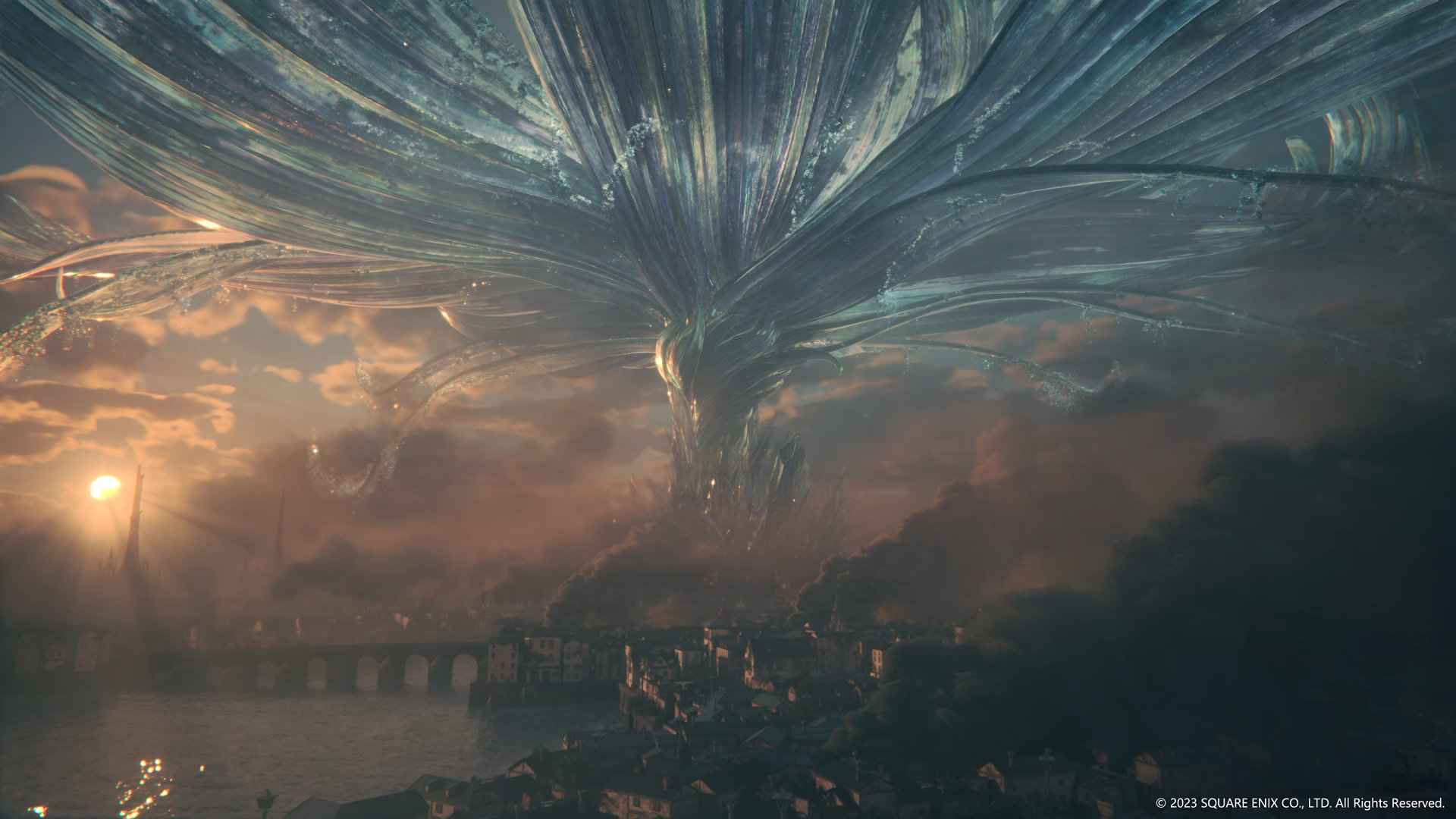
Let’s just wrap this up okay
Sorry, but I won’t be going into nearly as much detail about the rest of the game. This is already WAAAAYYYY too long, and there’s a lot of story left, and my brain is melting. You should get the broad strokes of what I liked and didn’t like by now. Most of this shit ain’t gonna matter by the time you fight Ultima.
But, anyway… what else happens after we fight Kupka?
Chaos in Sanbreque!
We meet Prince Dion, AKA Bahamut’s Dominant, who’s the leader of Sanbreque’s dragoons. He’s cool! He’s sympathetic to Clive’s cause! He becomes allies with Joshua, who’s still off doing his own mysterious stuff because he knows things about the plot and Ultima that we don’t.
Dion is also gay. He’s in love with one of his knights, Terence.
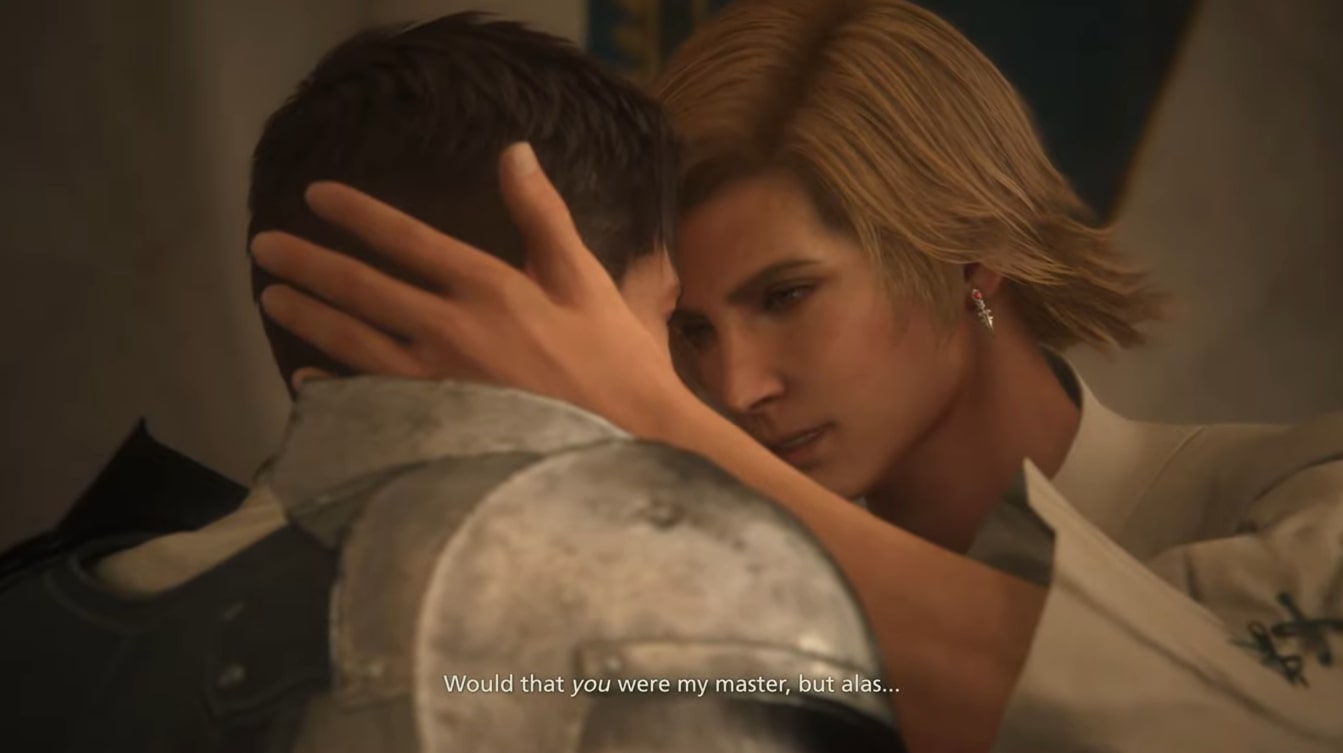
It’s cool, but Dion is woefully underused as a character in this game, and his romance even moreso. They get like two scenes together, I think? It’s very “Disney’s first ever gay character.” Similar to Clive and Jill, their love has to be chaste and understated while the bad guys are out there fuckin’ like rabbits. Maybe I should just be thankful this game didn’t try to tackle medieval homophobia with the same grace with which it tackles slavery.
Dion is suspicious because his dad, who used to be cool I guess, is now conquering the neighboring lands (despite it always, you know, being the Holy Empire of Sanbreque), with their capital being moved to the formerly neutral Crystalline Dominion after the destruction of their original capital’s Mothercrystal. His dad’s also had a creepy child with Annabella, who’s been busy genociding the Bearers in Rosaria for no particular reason. He even steps down and names the creepy kid the new Emperor, and that REALLY pisses Dion off. Dion gives a rousing speech in the throne room and realizes that the kid is really just another vessel for Ultima, or something, and tries to murder the kid, but his dad steps in front of the spear.
Overwhelmed by rage and grief, Dion transforms into Bahamut and starts going on a rampage. Clive finally properly reunites with Joshua and the two go Eikon mode to stop Dion, fighting tag team — until they realize they can FUSE!!!
This is the coolest boss fight in the entire game.

Yes, that is a dragon doing an Itano Circus. Yes, they are fighting in outer space. Somehow there are still two more major bosses left in the game after this.
After the fight, Dion successfully kills his little brother, who dissolves into blue particle effects because I guess he really was just Ultima in disguise for… some reason? Okay. Annabella starts weeping over the fact that her plan to fuck royalty and have a child of the noblest possible bloodline has been thwarted twice over. Joshua, who she’d thought was dead for the last 18 years, is standing right there, but she never really seems to process this. She thinks this is all just a bad dream, and slits her own throat to end it.
If you were waiting for any more insight into the character who arguably sets the entire story in motion, hoping she would have more depth than just “selfish evil bitch mother”: nope! That’s it.

Barnabas!
One Mothercrystal now remains, and in its way stands Barnabas. Warrior King of Waloed! Odin’s Dominant! Benedikta’s boss! And, apparently, faithful servant to Ultima?
I’m not going to waste much breath on Barnabas as a character, because there isn’t much there. All his scheming throughout the game is revealed to be the bidding of Ultima, as Barnabas is an accelerationist who wants Ultima to create a new world and turn everyone into Akashic thralls — or rather, turn everyone back into Akashic, as this was apparently humanity’s original nature before they unexpectedly developed free will. Clive LOVES free will and Barnabas HATES it! He also has an Oedipus complex? I don’t fucking know. He’s evil, he has a big fight with Clive to test him, he forces you to take the last Eikon skill tree and become Ultima’s perfect vessel.
With Barnabas’ story as a widely beloved mythical warrior king who betrayed his people to create an army of monsters with the help of an evil god as part of a grand scheme to create his perfect world, I do wonder if they’re trying to channel Griffith here. If that’s what they’re going for, they weren’t very good at it.
The main story has given up on politics and shifted fully into scenery-chewing villains who ponder the nature of consciousness. It’s not particularly great by FF standards, but I’ll take it over the bad politics.
The grand finale!
After doing like six more hours of side quests, we finally come to the climax! Clive, Joshua, and Dion set off to stop Ultima. Jill isn’t allowed to come. She has to wait back at home and pray for Clive’s safety, as she does for most of the last quarter of the story. It sucks. Regardless, the buildup to this is rather emotional, with everyone understanding there’s a good chance they aren’t going to come back from this mission.
This assumption is correct, as in the initial phases of their assault on Ultima’s giant floating crystal fortress Dion and Joshua both go down. And so we’re left with a grieving Clive filled with righteous fury.
It’s time to kill god.

I do have to once again admit that I kinda like this stuff. The fight is cool, the music is cool, and there’s something cathartic to me about Clive defying the wishes of his creator and going “Fuck you, we’re choosing our own path.” If this was all the game had ever aspired to be, this big battle where the voices of all of Clive’s loved ones go “You can do it, Clive!” would be a fun finale. But, of course, in the back of my head I know how much of the preceding story has fallen to the wayside.
Clive attempts to give the game some kind of thesis by saying that Ultima actually isn’t any different from humans because he’s driven by fear. He’d escaped from his home after it was consumed by the Blight, fled to a new realm of his own design, and populated it with mindless peons to worship him as a god. He now wishes to regain control of his creations because he fears what they’re capable of with free will. A parallel is drawn with the story of the Bearers, who became oppressed when the non-magic users grew to fear them. Clive, on the other hand, no longer fears the future, or the harm mankind is capable of via free will. He readily admits that even if he stops Ultima’s plan to take away everyone’s consciousness, there will still be pain and suffering in the world, and everything won’t be magically fixed. But that’s just life.
This is quickly undermined by the ending where Clive magically fixes everything by beating Ultima, absorbing his power, and using the last of his energy to will all magic out of existence. It’s a fine moment in a bubble, and Clive’s apparent death and Jill’s tearful realization of his fate back at the Hideaway moved me at the time, but it’s a big wet fart of a resolution to the stories of the nations of Valisthea. None of that stuff mattered. All that mattered is Clive bravely declaring that having free will is Good, Actually. In the end, this is a story about slavery and about questioning the nature of power in which the solution is to just have the main character become so powerful that he can Thanos snap slavery out of existence.
But at the same time, Clive quite literally finishes the fight by punching god directly in the face as hard as he can via a button mashing QTE, so who’s to say if this is good or bad?
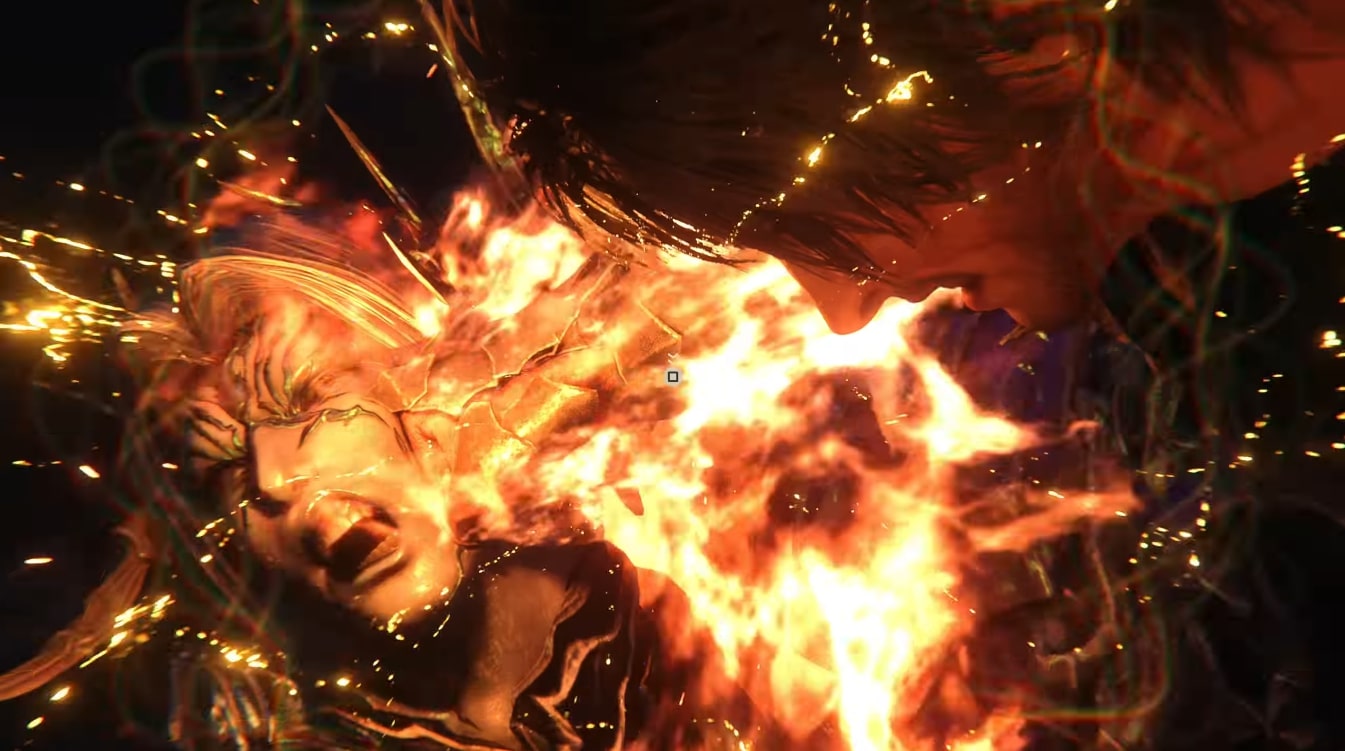
The ending also contains not one but TWO hamfisted title drops attempting to give meaning to the phrase “Final Fantasy,” as if we’ve all been waiting on pins and needles to learn what the title REALLY means for decades. First, towards the end of the battle, Ultima says “The world you seek is but a fantasy!” to which Clive retorts “The only fantasy here is yours. And we shall be its final witness!” Then, in the post-credits scene set in the far future (which still looks like medieval Europe), the story of the game has been immortalized in the form of a book literally titled Final Fantasy, which is now viewed as a mere fairy tale in this peaceful world without magic. It’s a game of pretend to be played by two brothers, who are probably supposed to be the reincarnations of Clive and Joshua, or at least their successors in spirit.
Said book is attributed to Joshua, who we thought died — although, again. Phoenix. There’s apparently some hints in some side quests that this might actually be Clive’s doing, which has sparked tons of heated debate over whether or not Clive survived, especially since a LOT of people seem very mad over both the ambiguity of the ending and the thought of an ending where the hero dies. Personally, I find a bittersweet ending where Clive chooses to sacrifice himself to rid the world of the curse of magic, living and dying on his own terms like he’s repeatedly said throughout the game, to be much more satisfying than one where you have to dig through a bunch of shitty optional side quests for clues that maybe Clive survived off-screen after his emotional death scene.
Either way: it’s over.
Final takeaways
In conclusion, Valisthea is a land of contrasts.
This game has massive, glaring flaws. The writing is frequently terrible. The gameplay is fun, but undercooked. Its handling of its female cast is about as bad as I expected. It’s paced horribly, with an absurd amount of filler. But I went into Final Fantasy XVI with negative hype, and came out with some hype, so I guess that’s a partial win?
I expected a game that was just dour and self-serious all the way through, and that’s certainly part of it, but it’s also a game full of lavishly produced action sequences that are just dumb fun, and moments of genuine warmth between the characters that are sold by the all-around excellent voice performances. Clive is not my favorite FF protagonist, but I came away liking him and some of his supporting cast more than I thought I would. So I can’t quite say I totally hated it, even if I hated many parts of it. Like I’ve been saying: extreme highs and lows.
If I had to go back in time and “fix” this game, I would mainly want to see two big changes:
- Remove the concept of the Bearers from the story wholesale. It’s unnecessary to the overarching narrative and drags everything down with how poorly it’s handled.
- Cut at least half of the side quests.
I do think there’s potential in this action-based style of Final Fantasy. There’s something here. But this first attempt is far from a home run, and far from my favorite game in the series.
I guess that’s Final Fantasy for you. As everyone will tell you, it’s a series that’s been many things for many people over the years. Every FF is someone’s favorite and someone else’s least favorite. I just hope that the next wholly new take on the series might be a bit more for me, and that I don’t have to wait until next decade to get it. In the meantime, I’ve got Rebirth to look forward to.
Uh oh, 2023 Bobby! While I enjoyed it much more than FF16, I also thought Rebirth was a little disappointing in some regards! But that's a lengthy article to be finished another day...


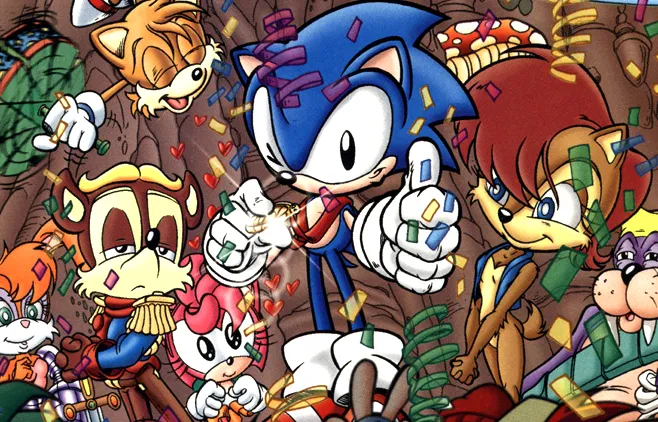
Comments